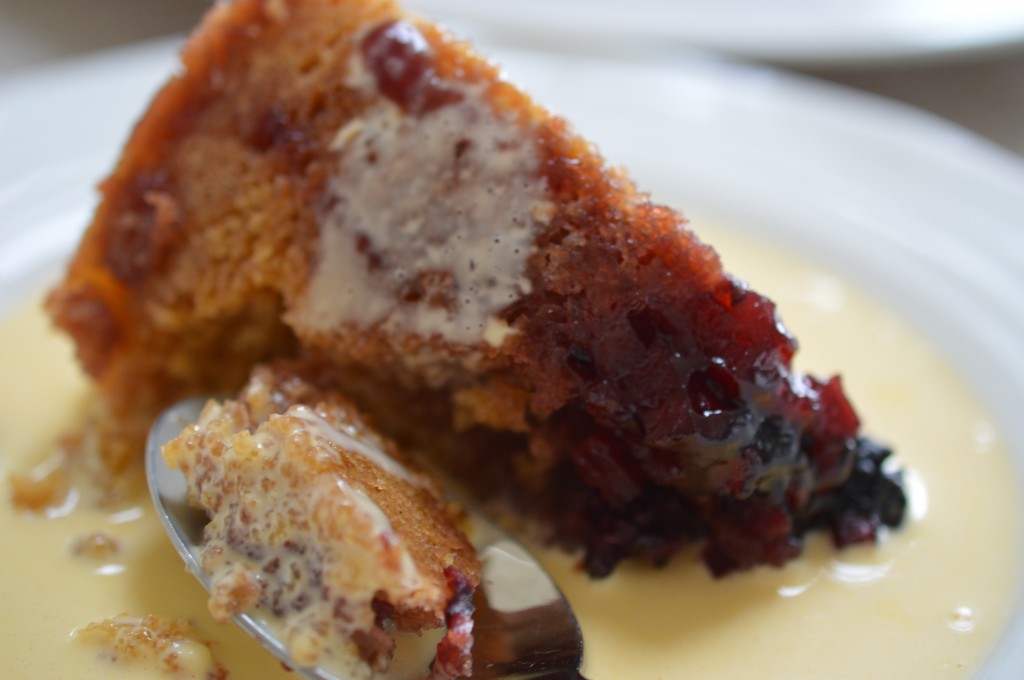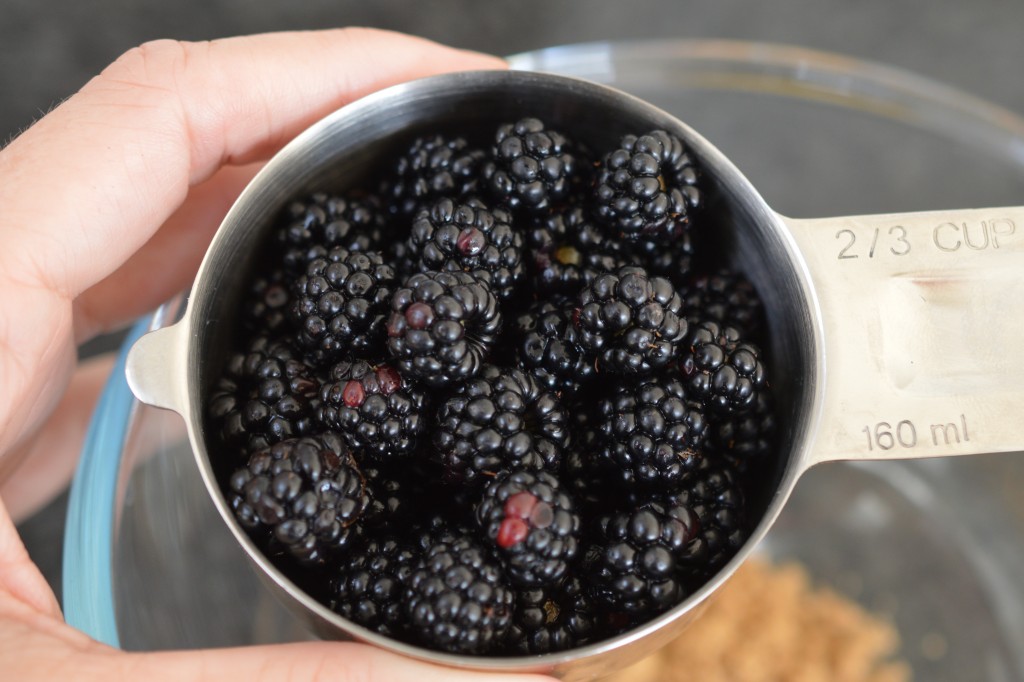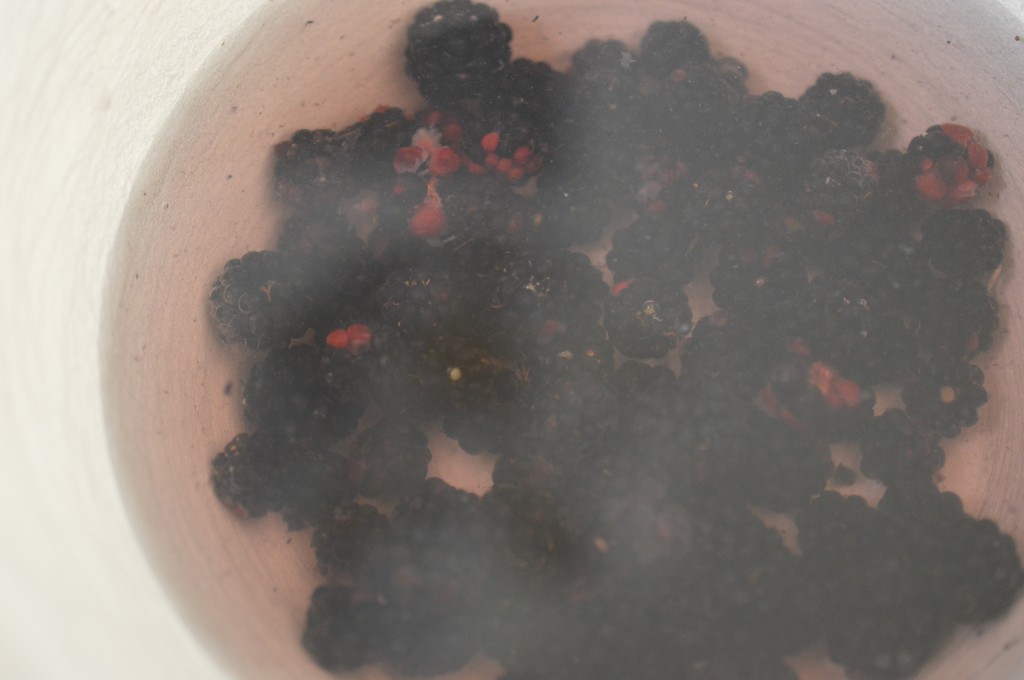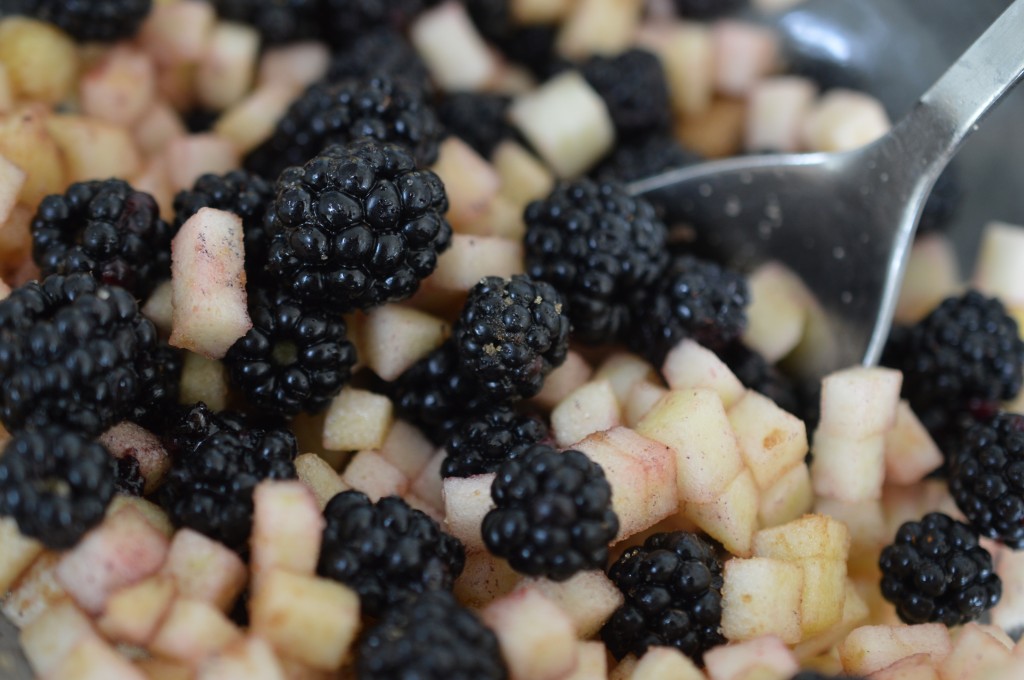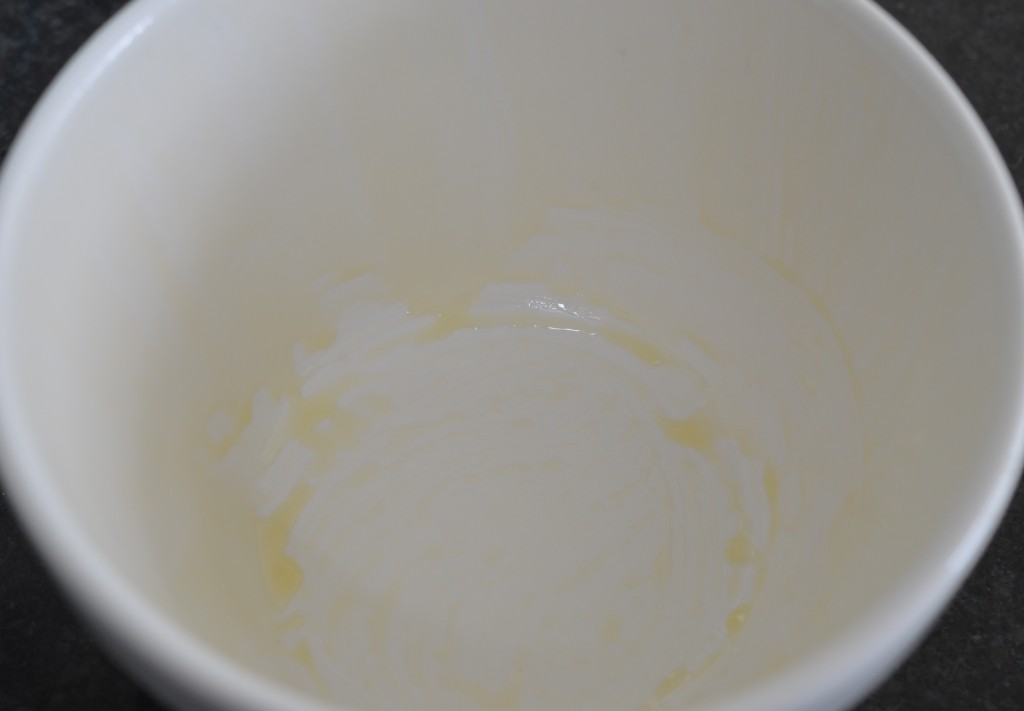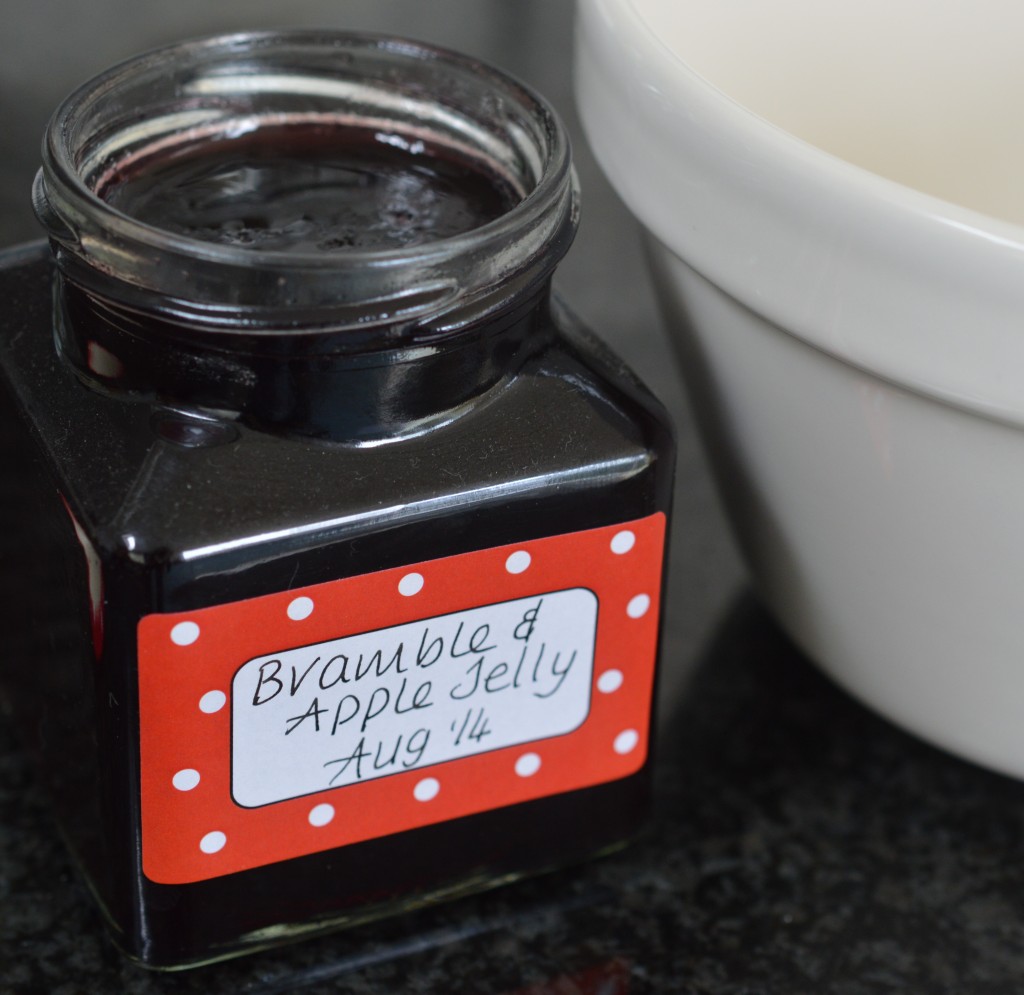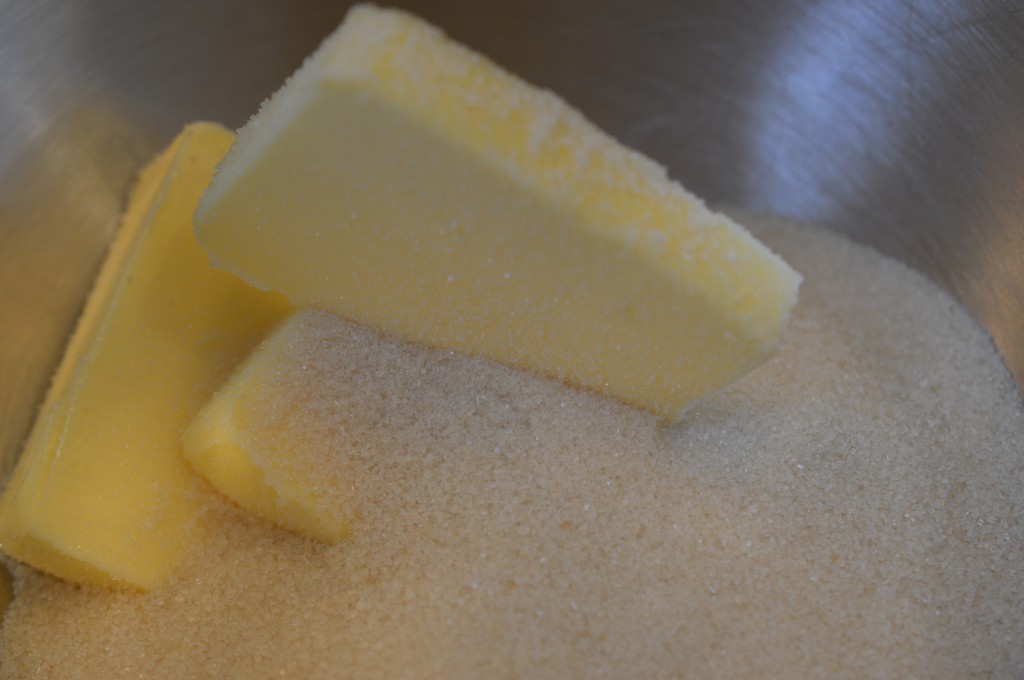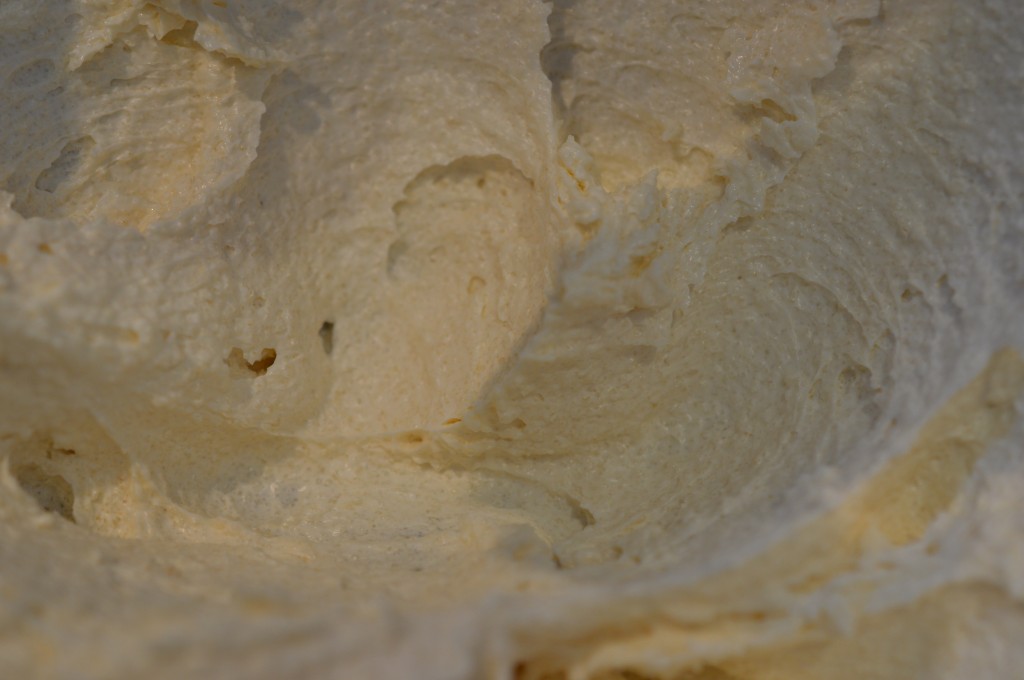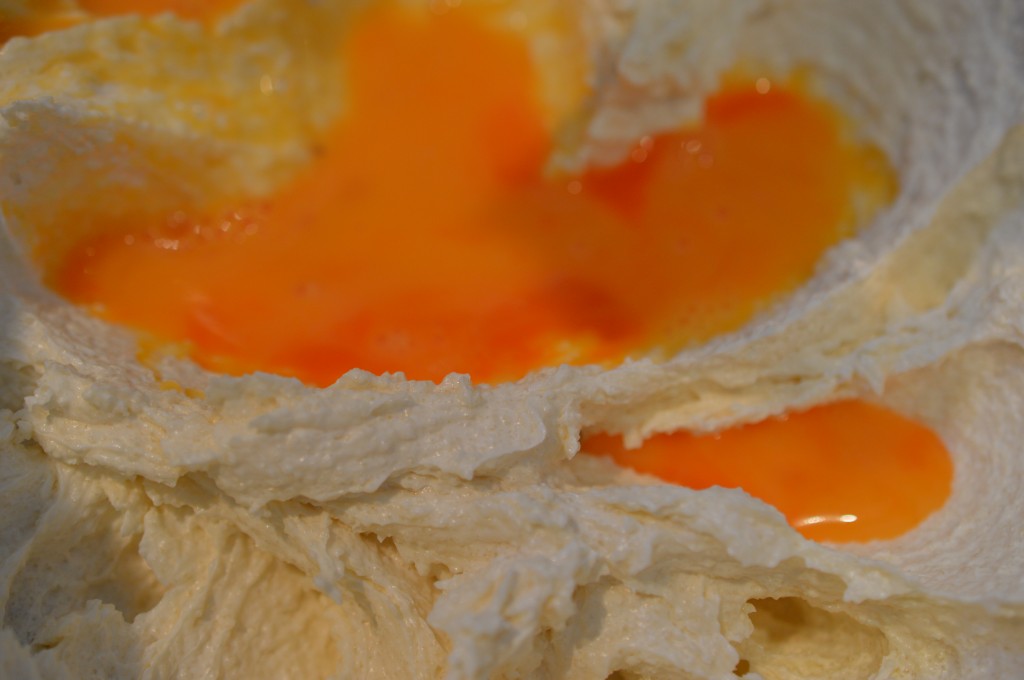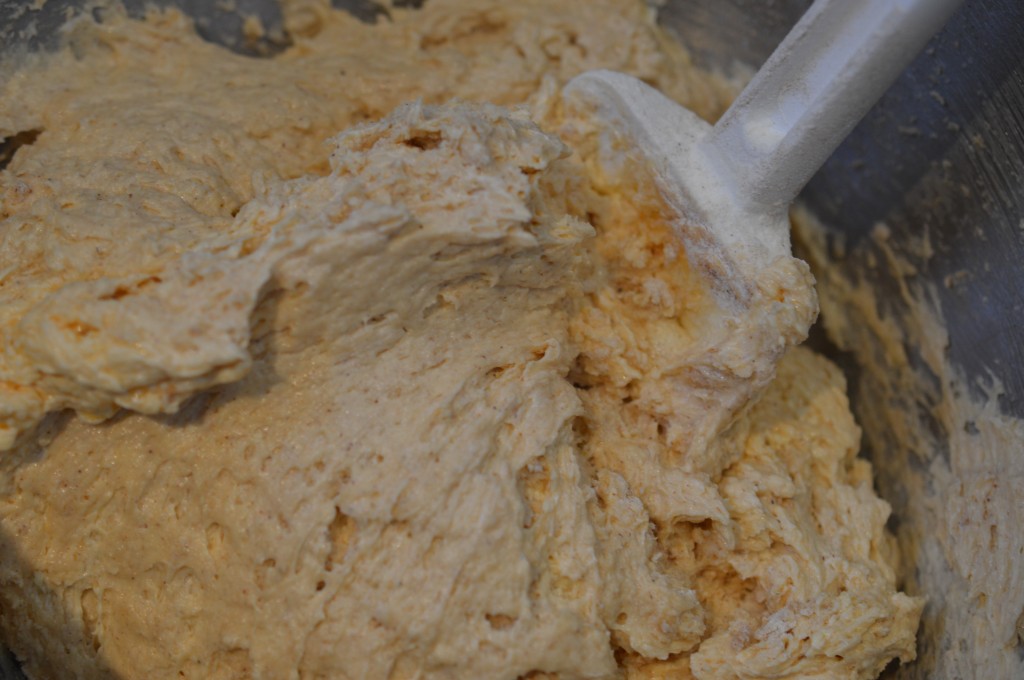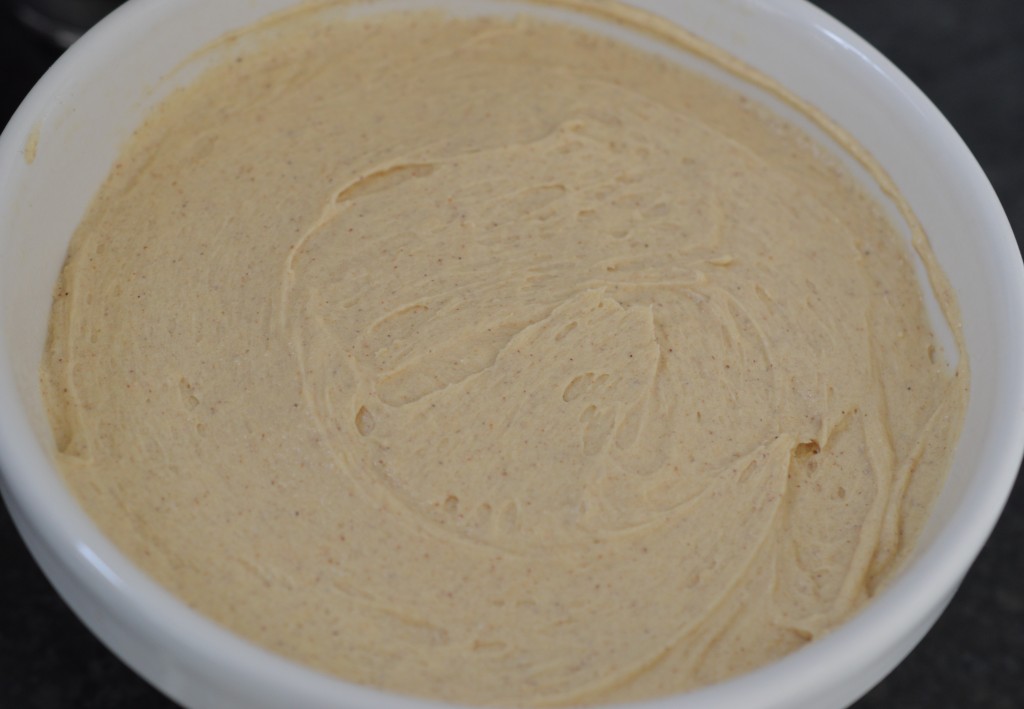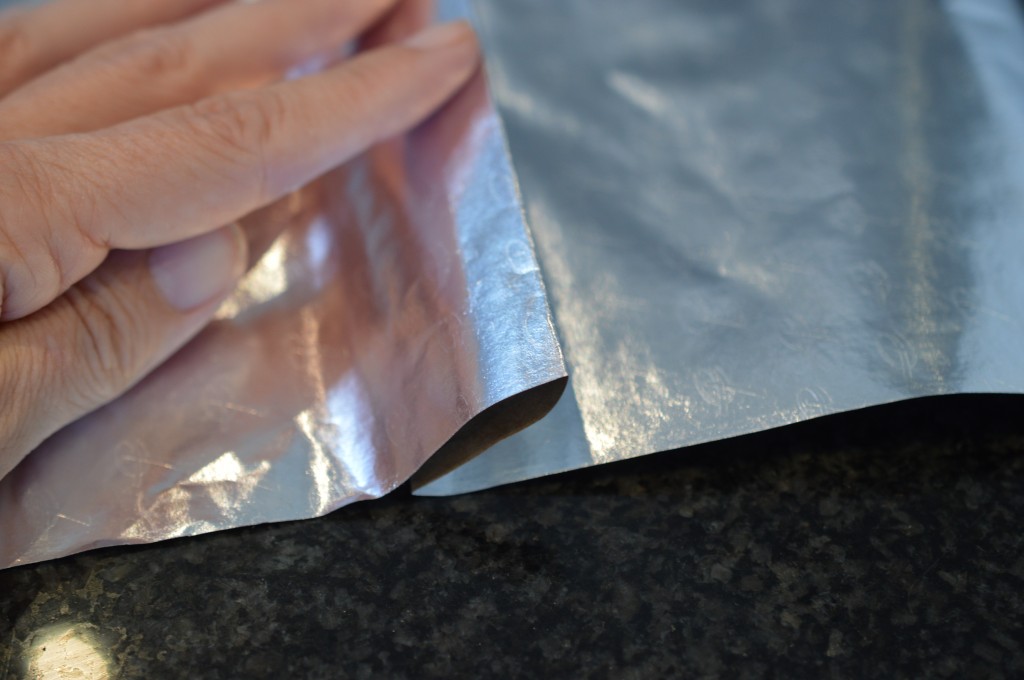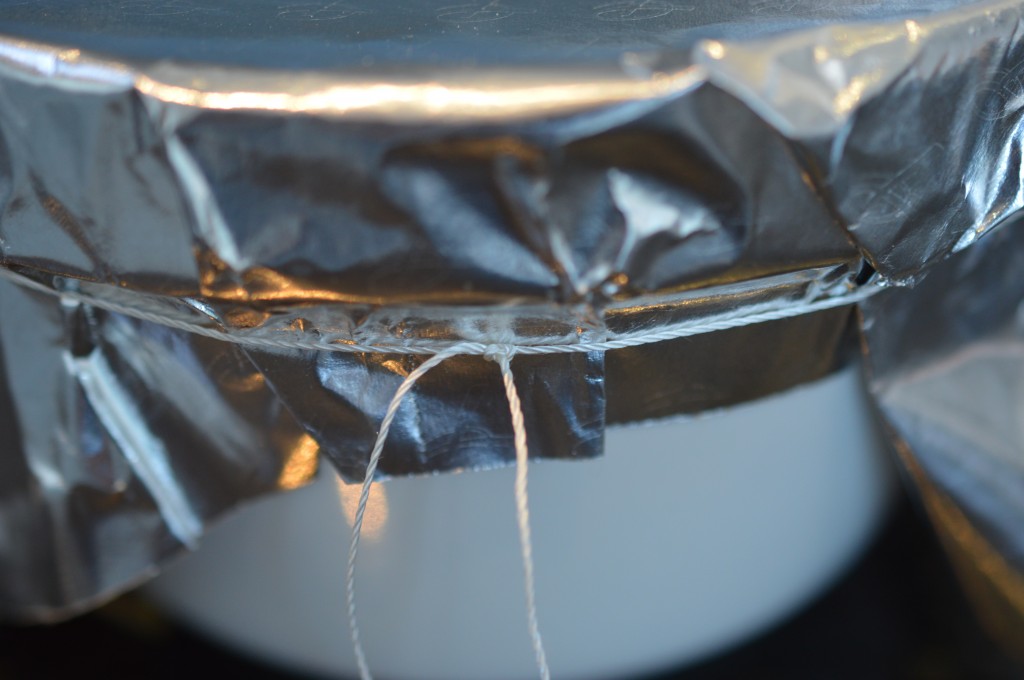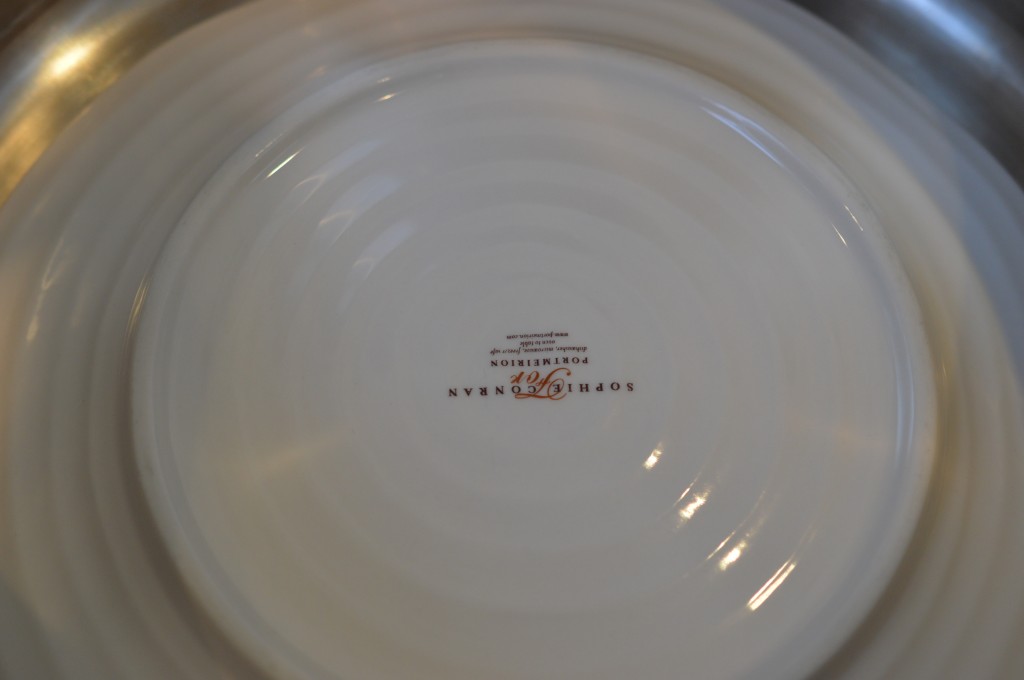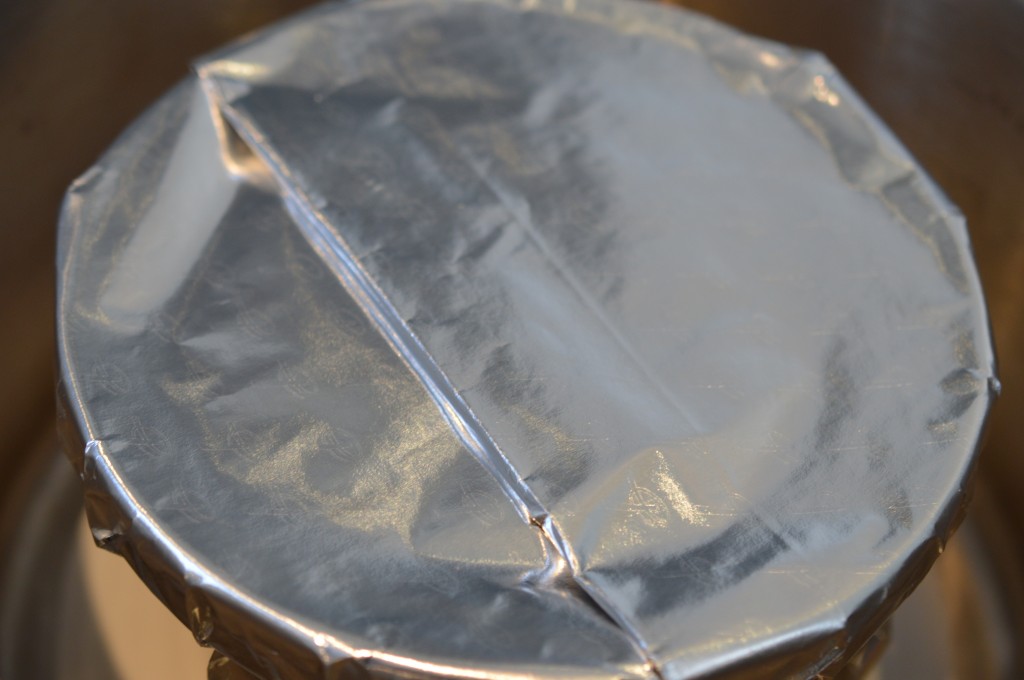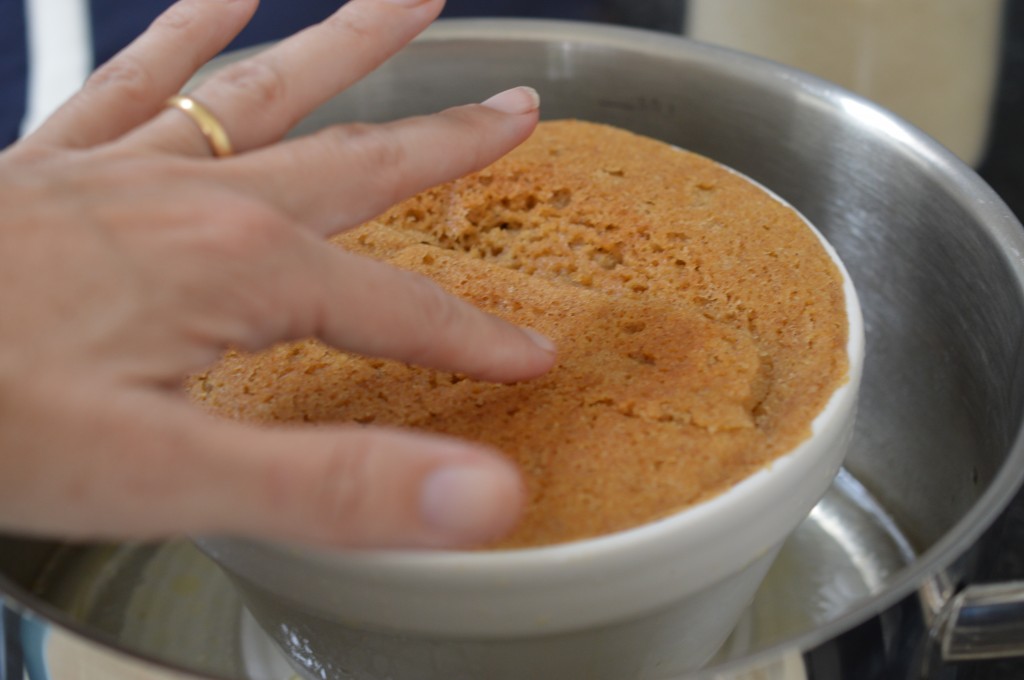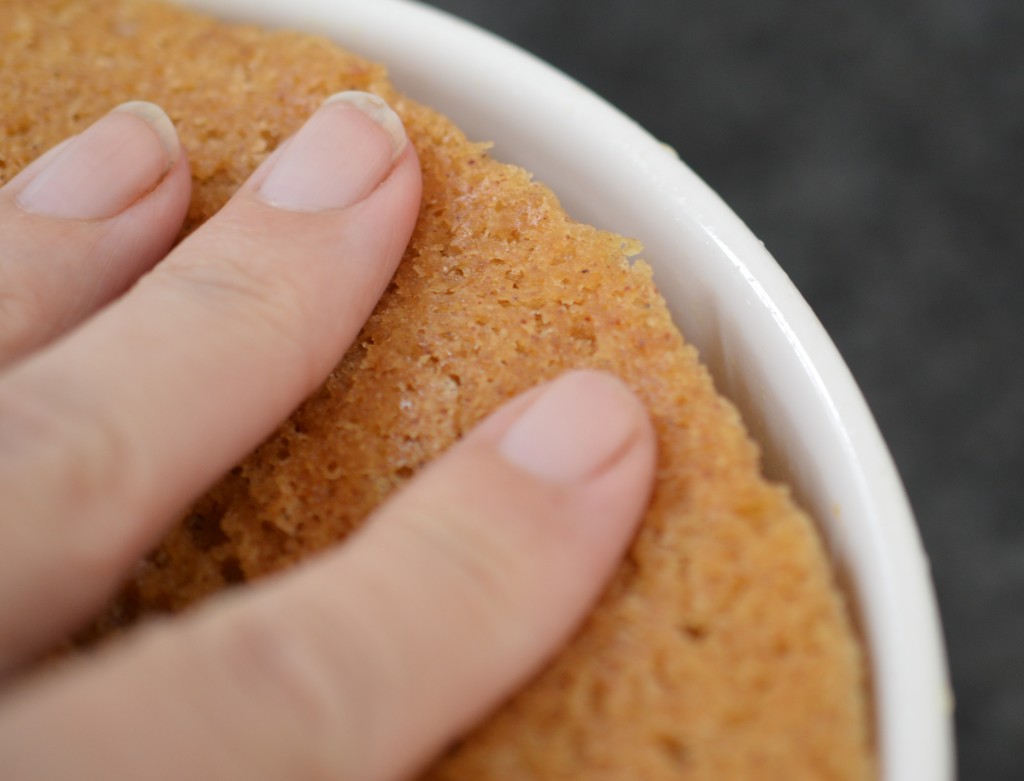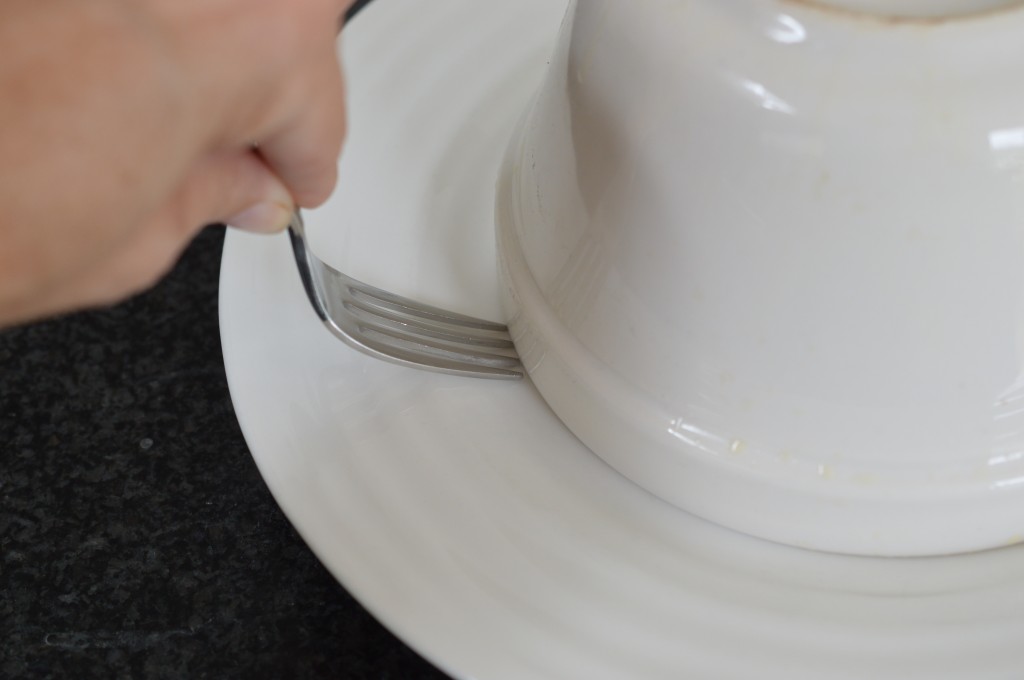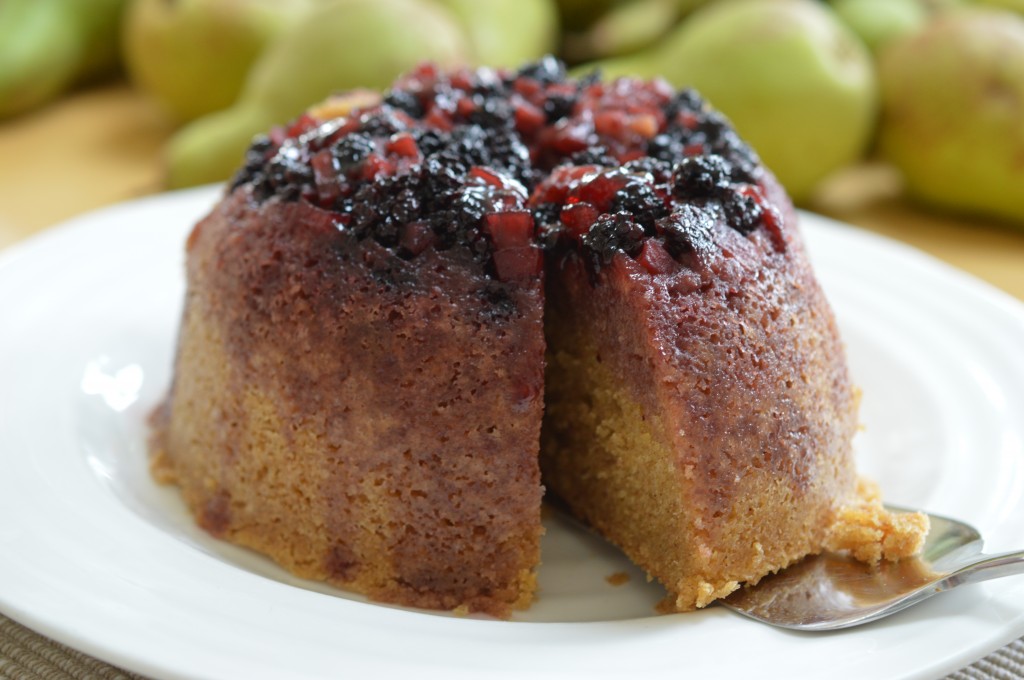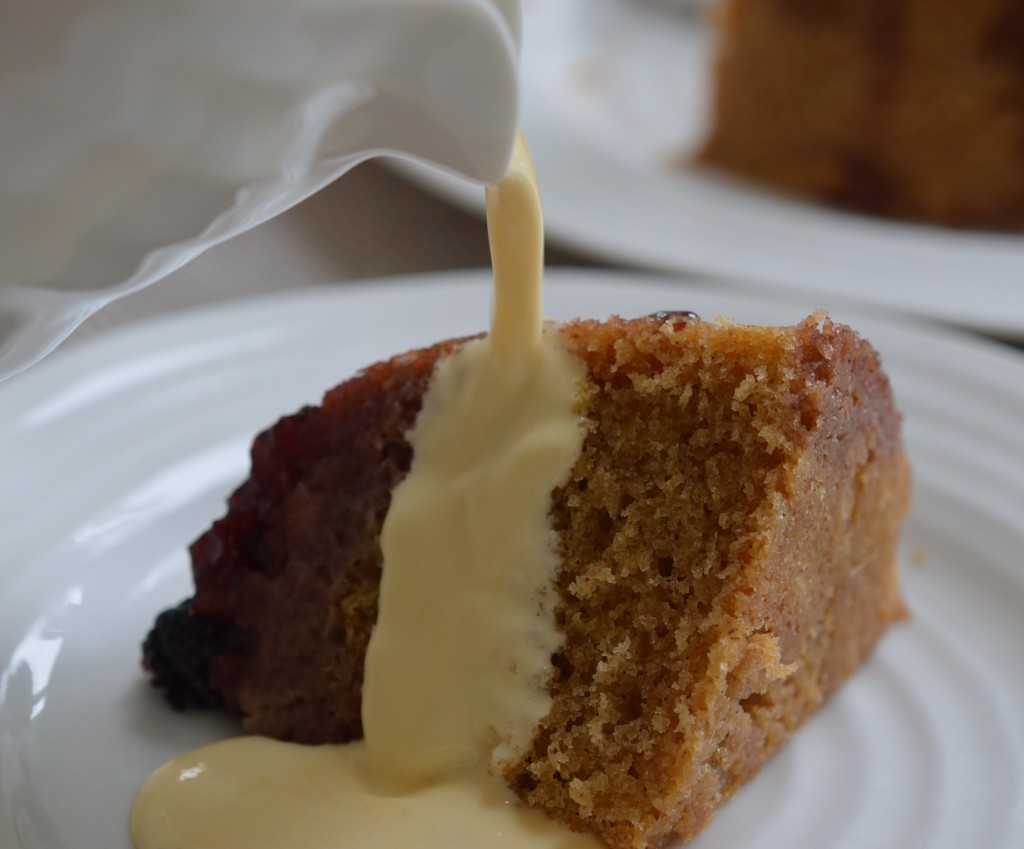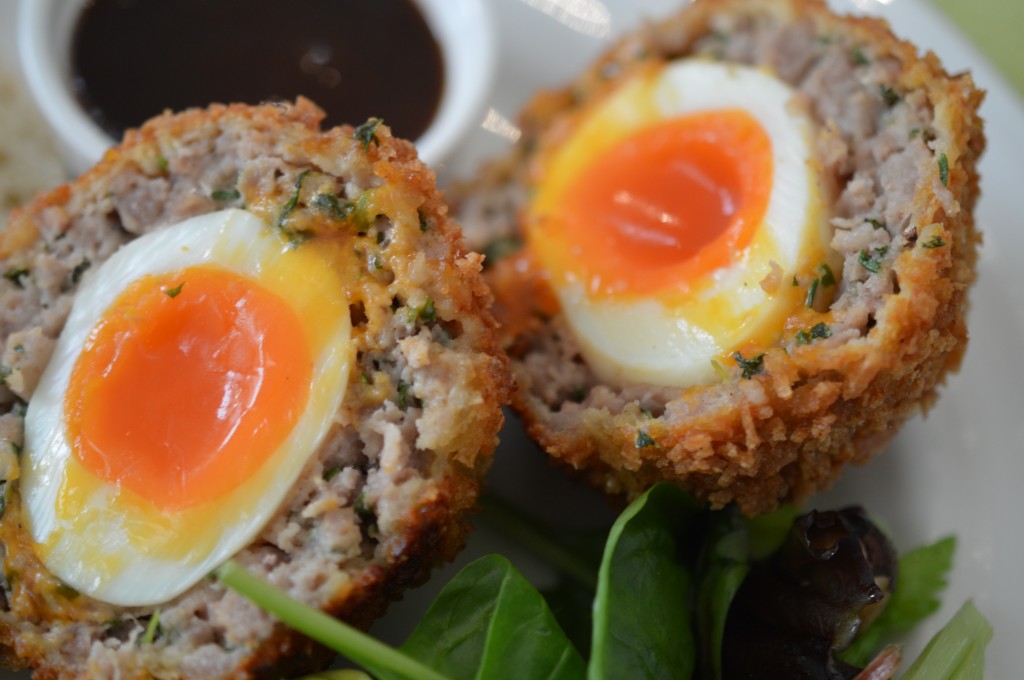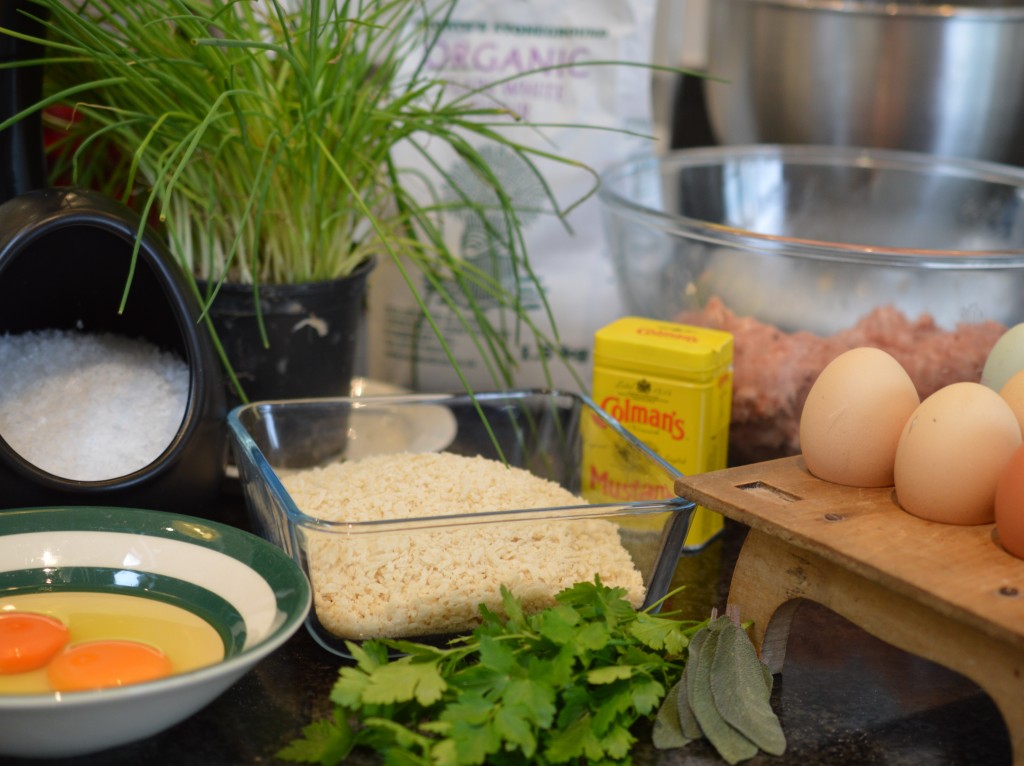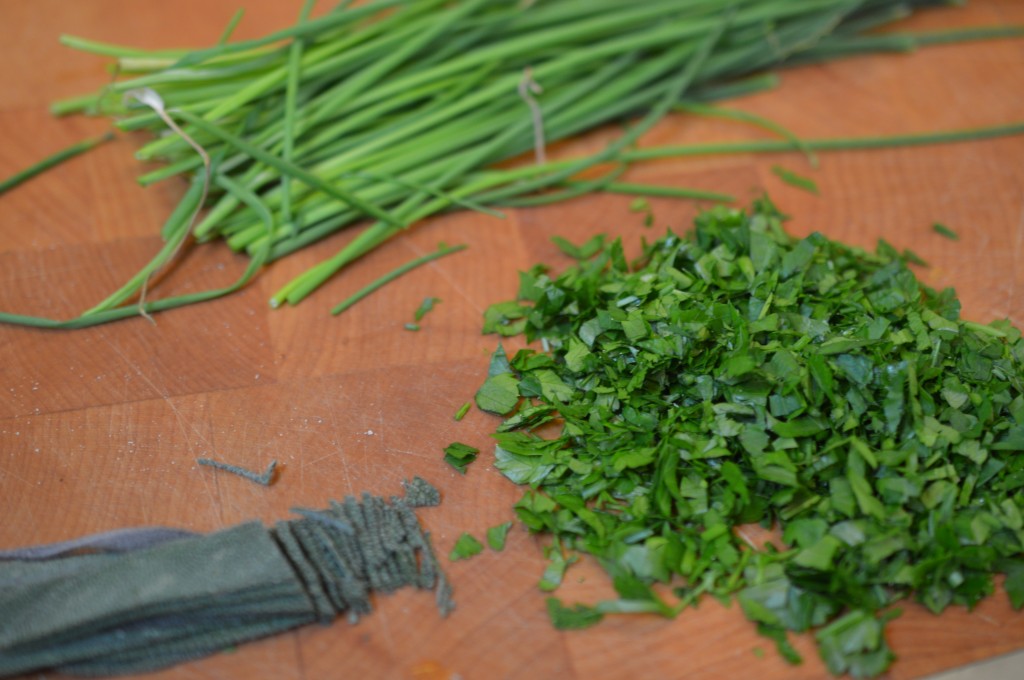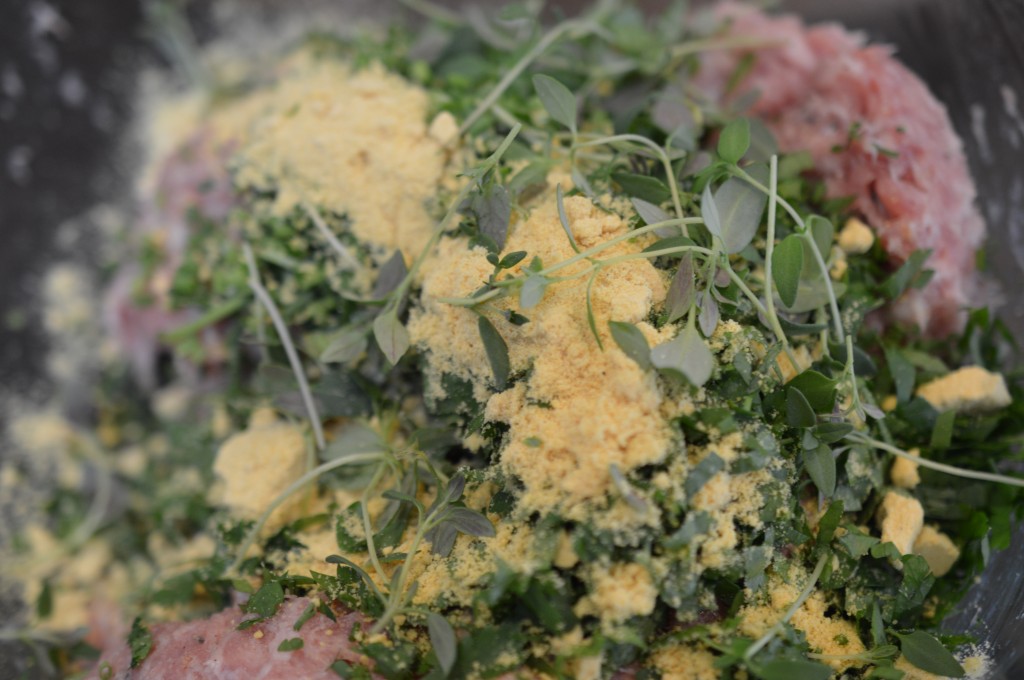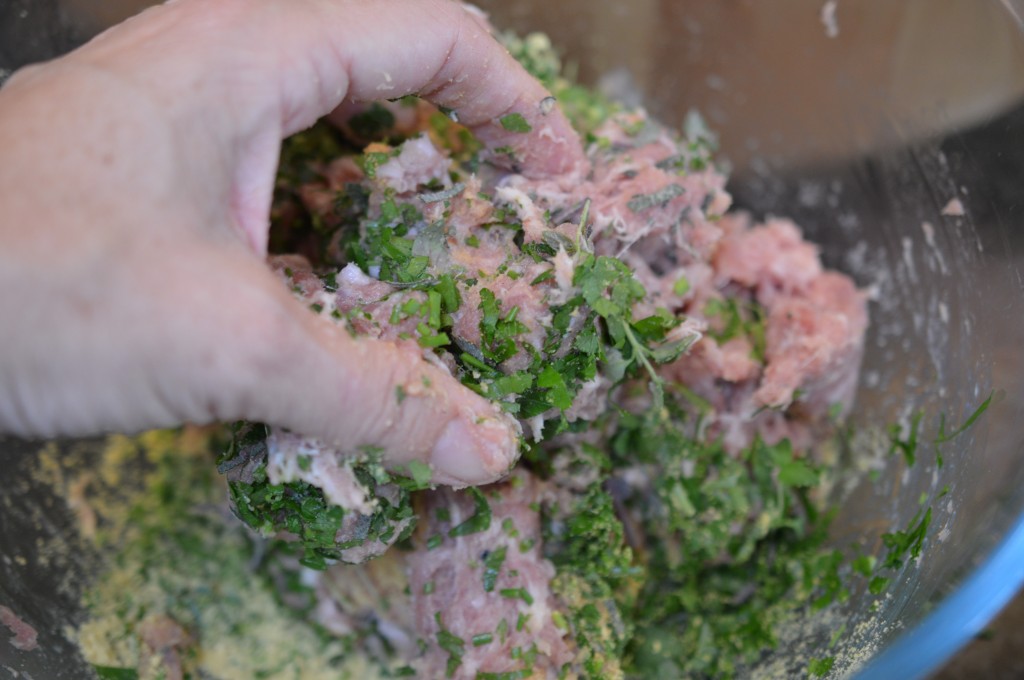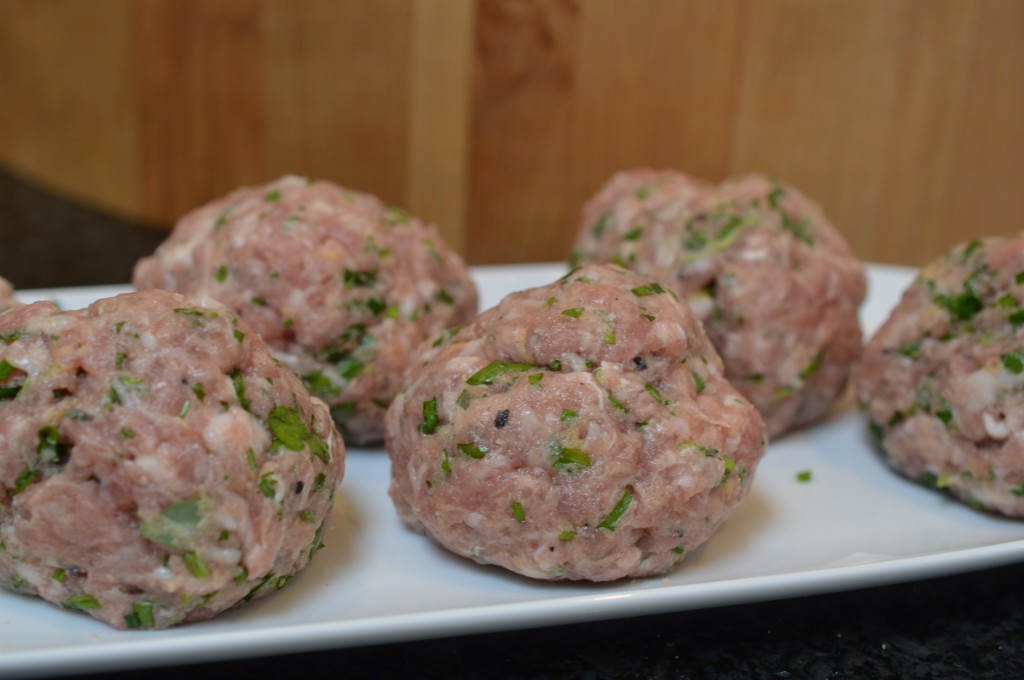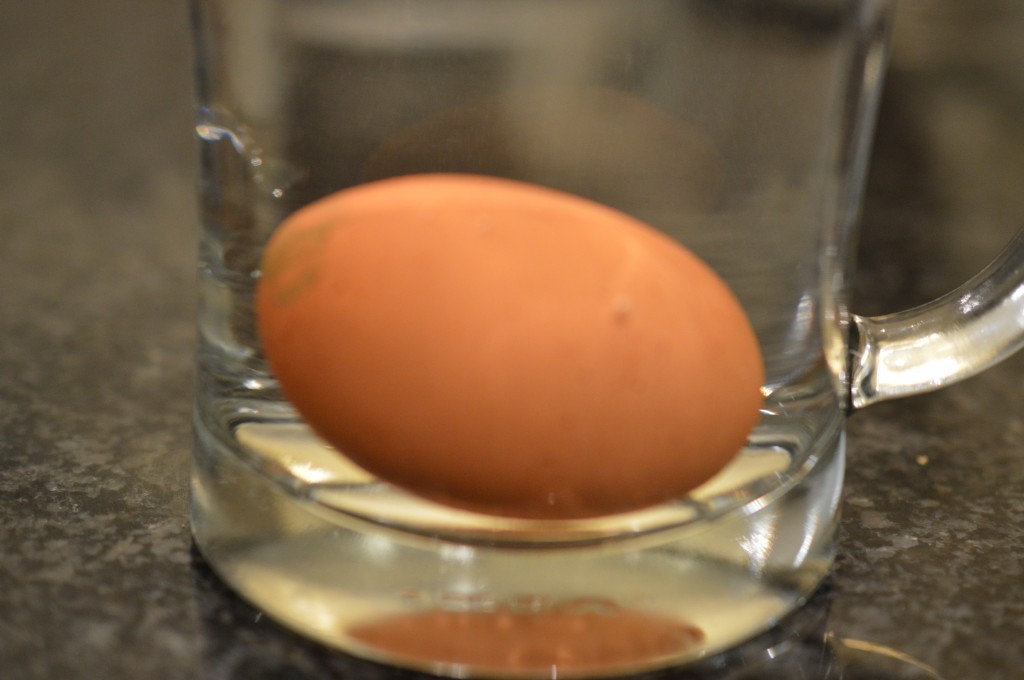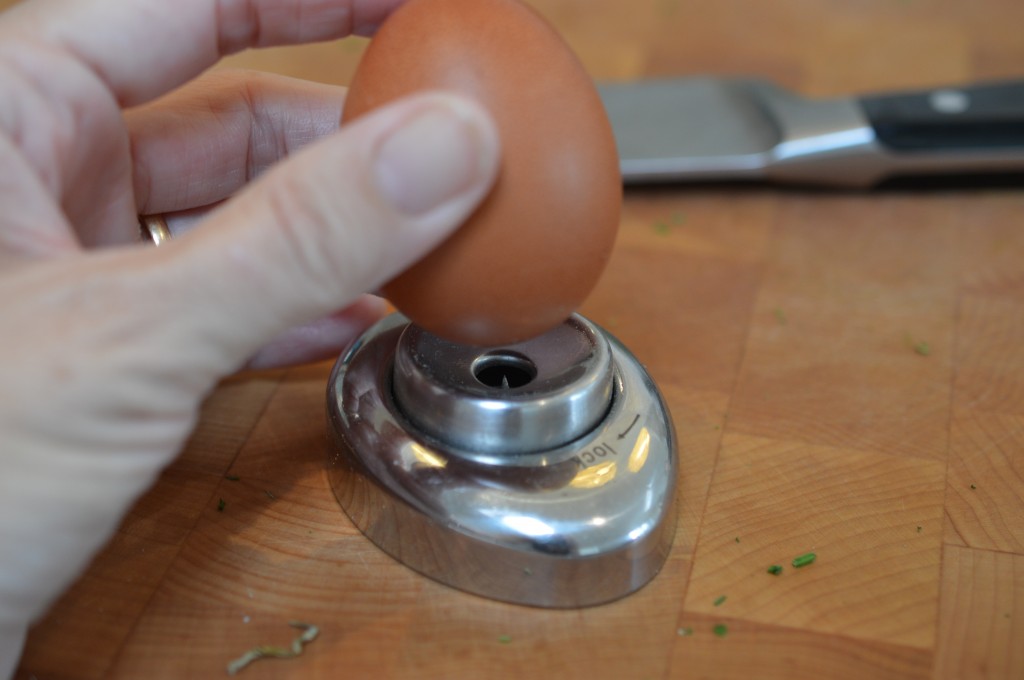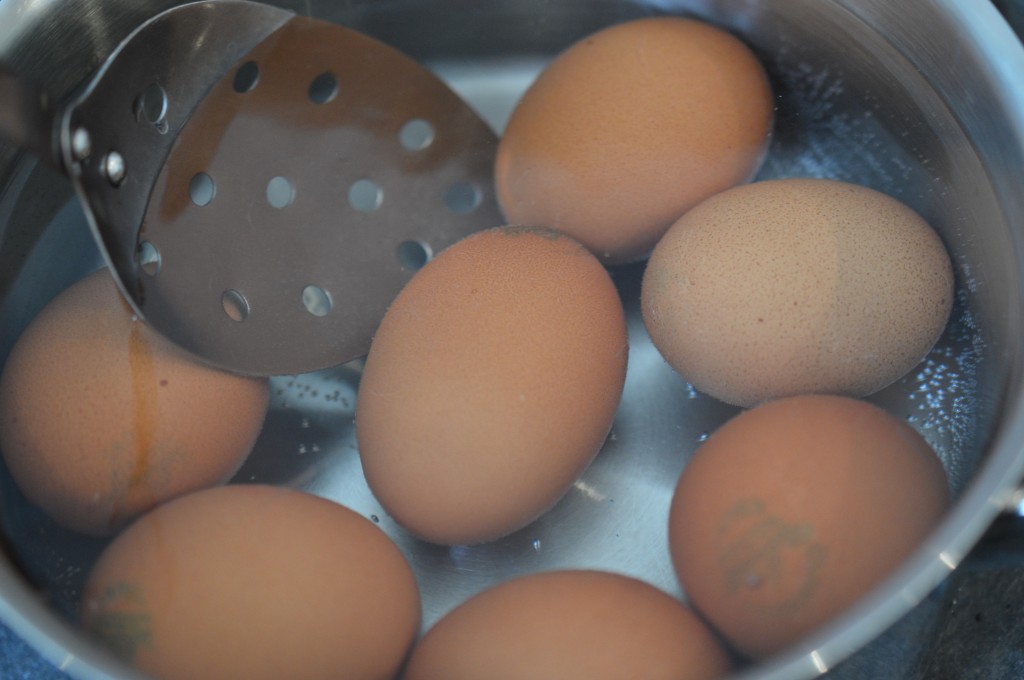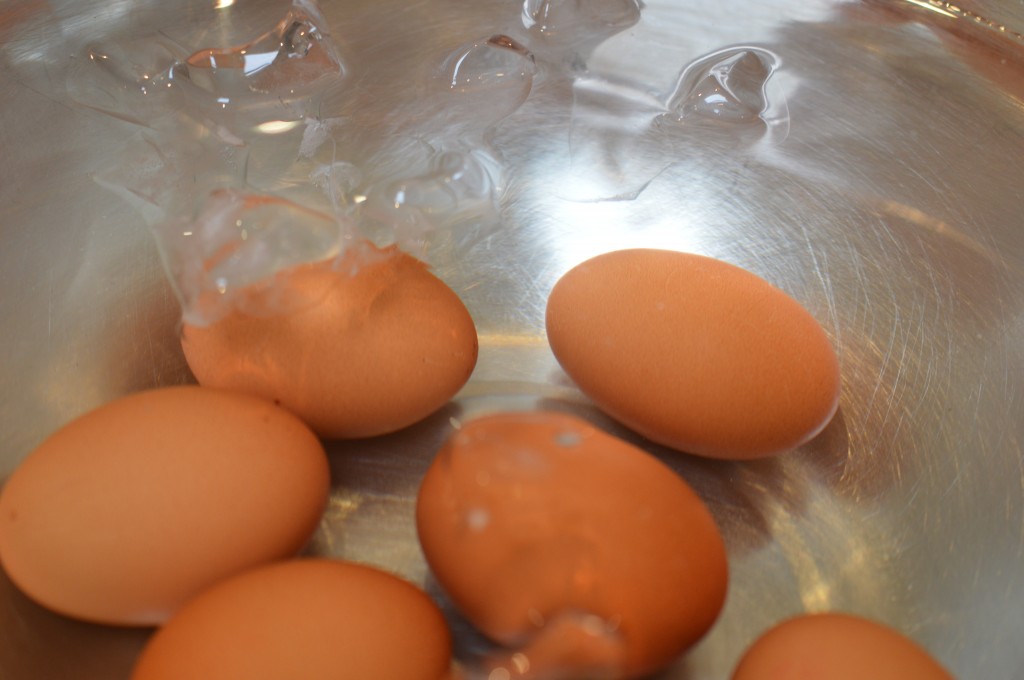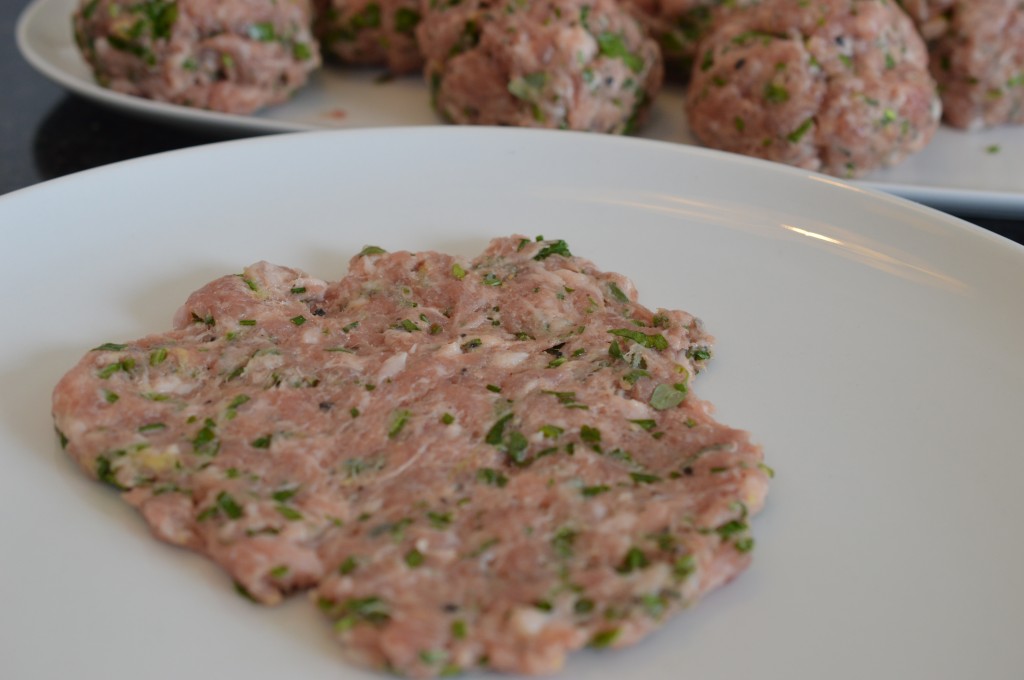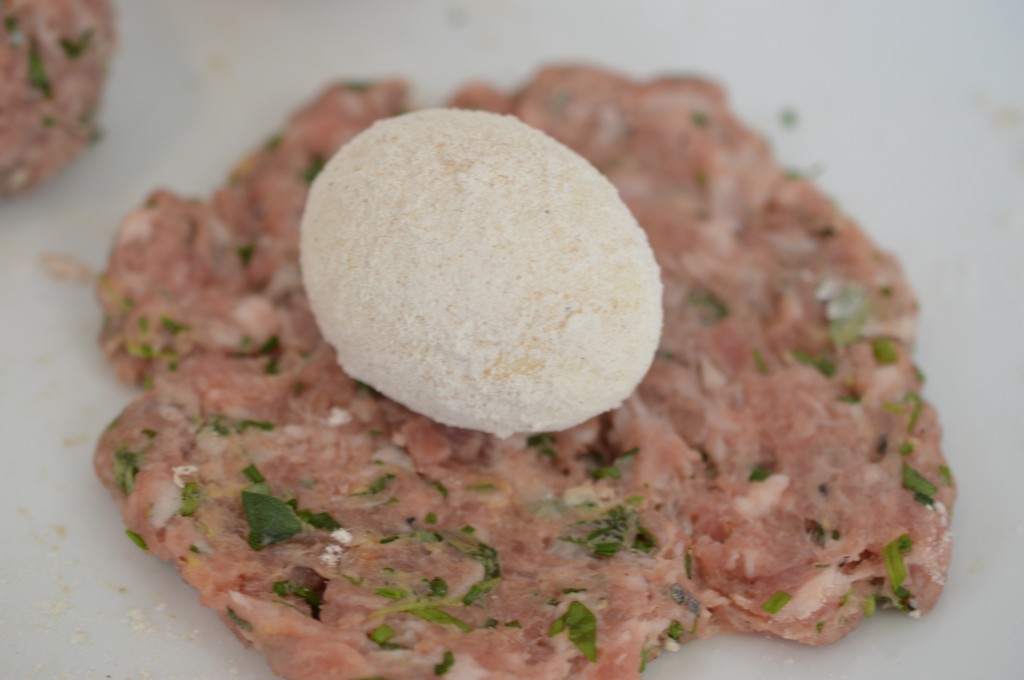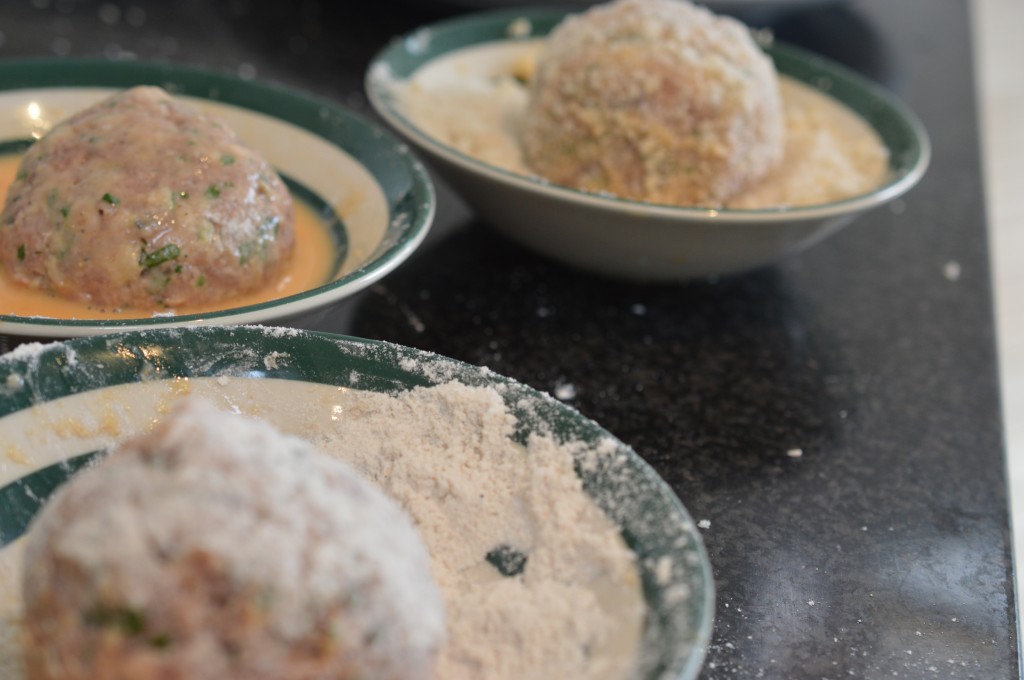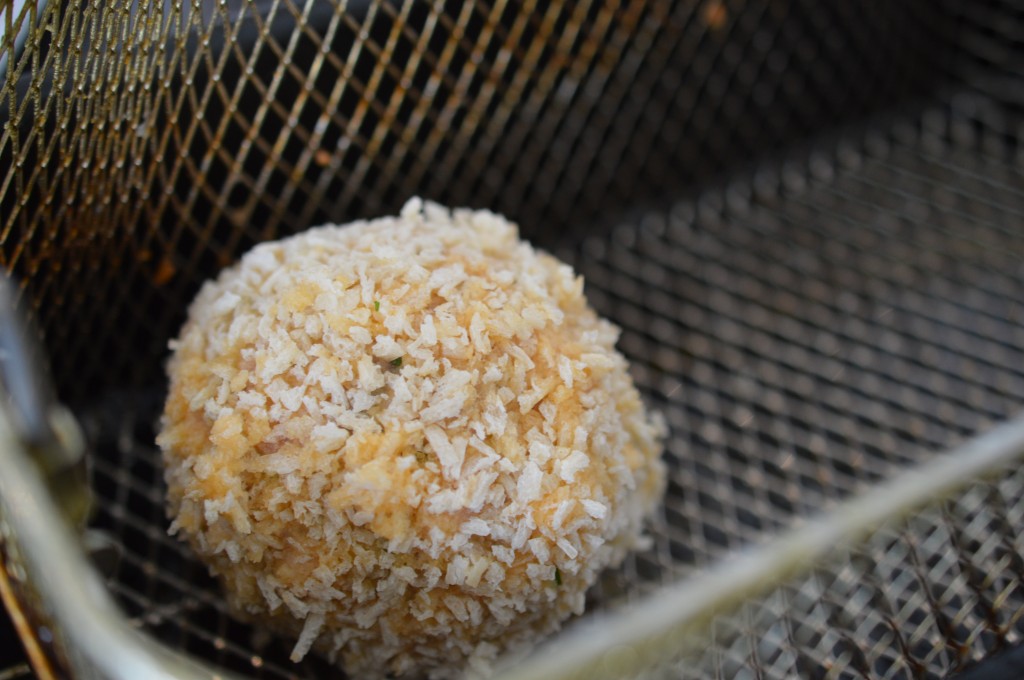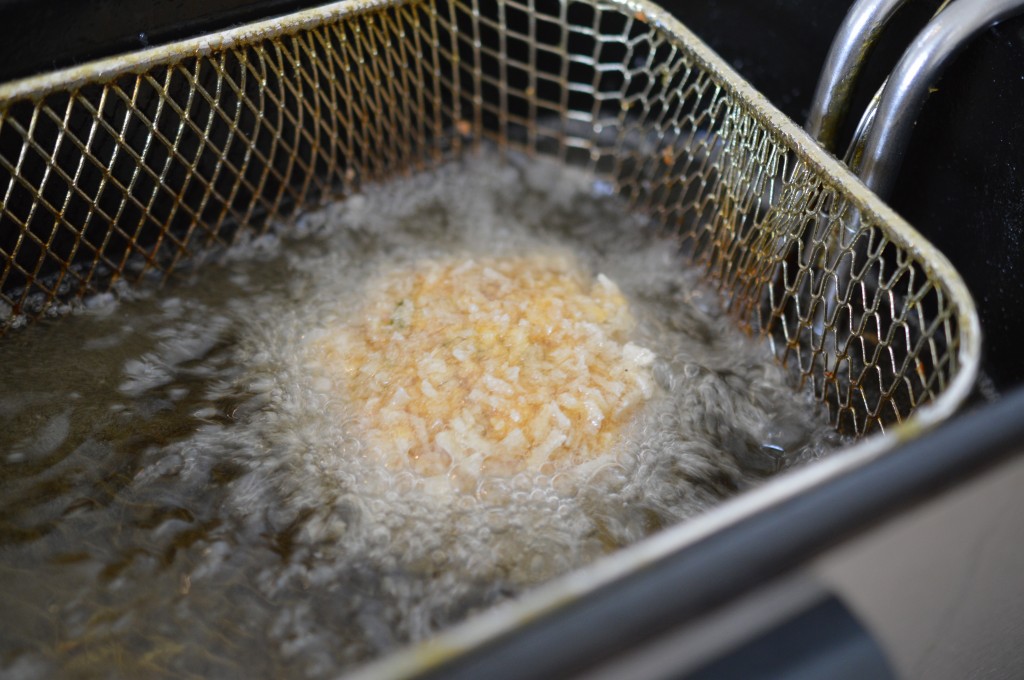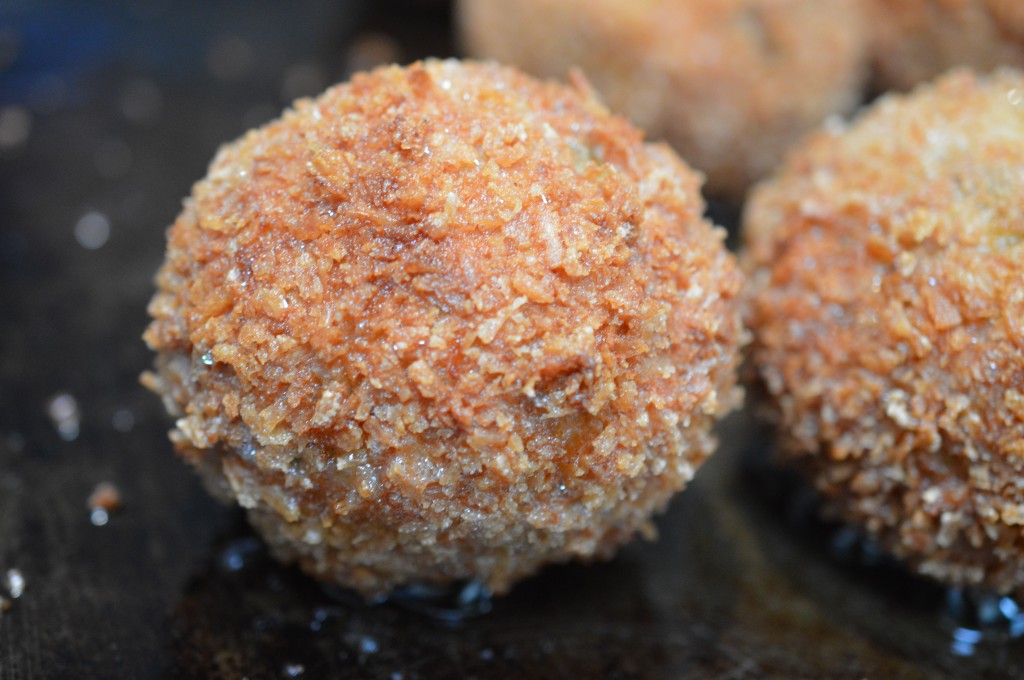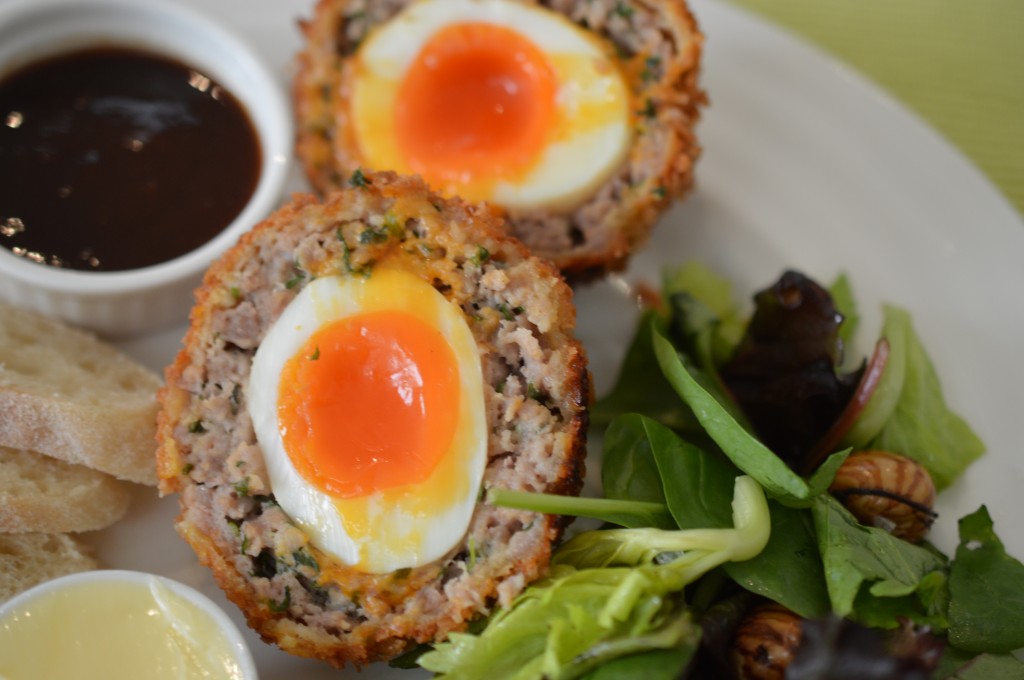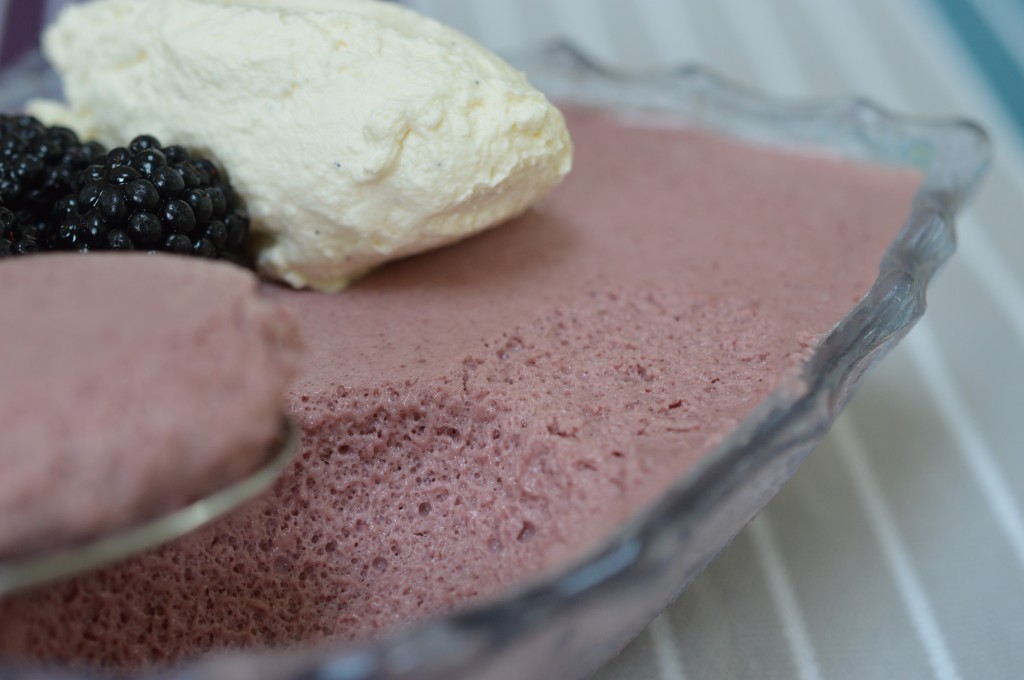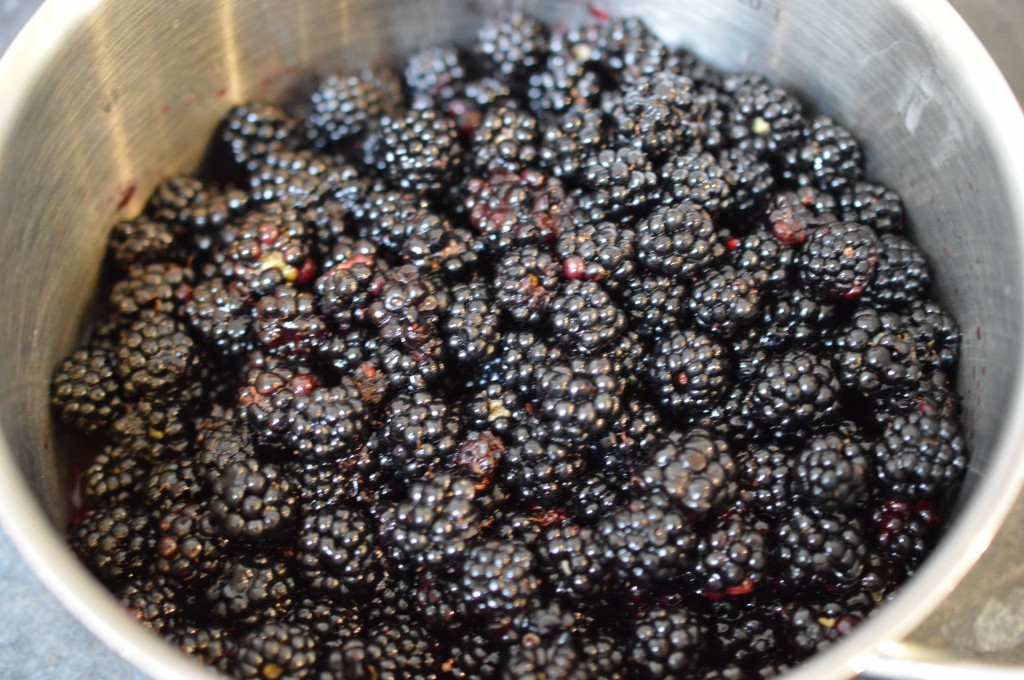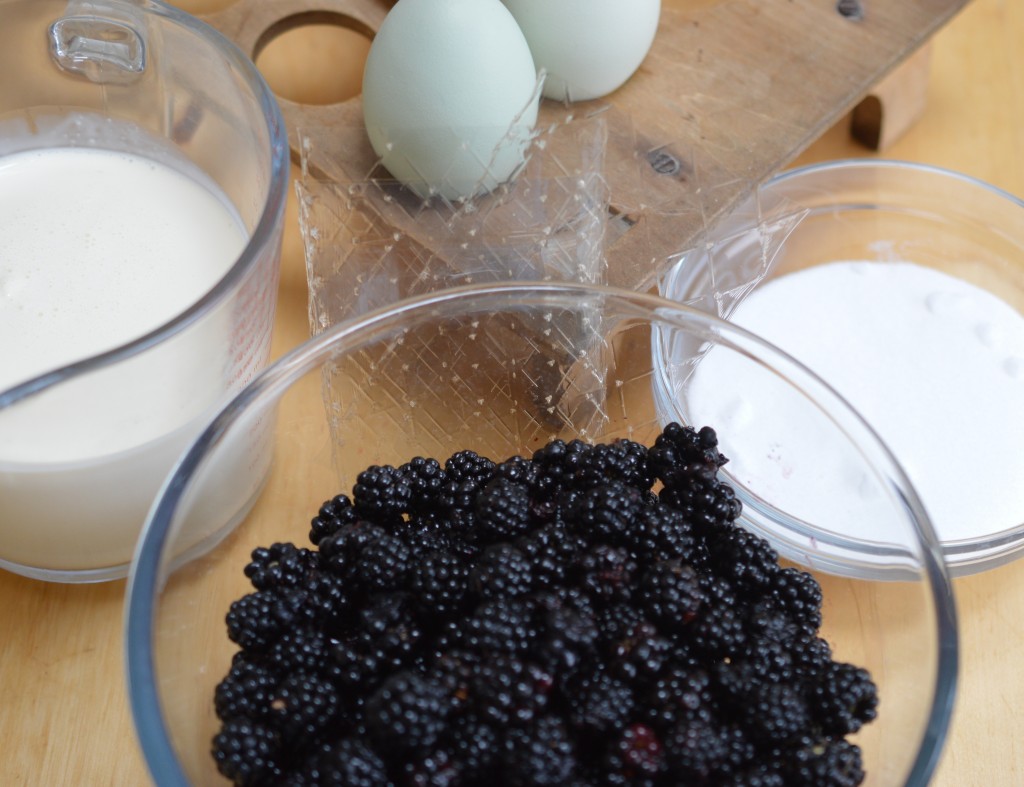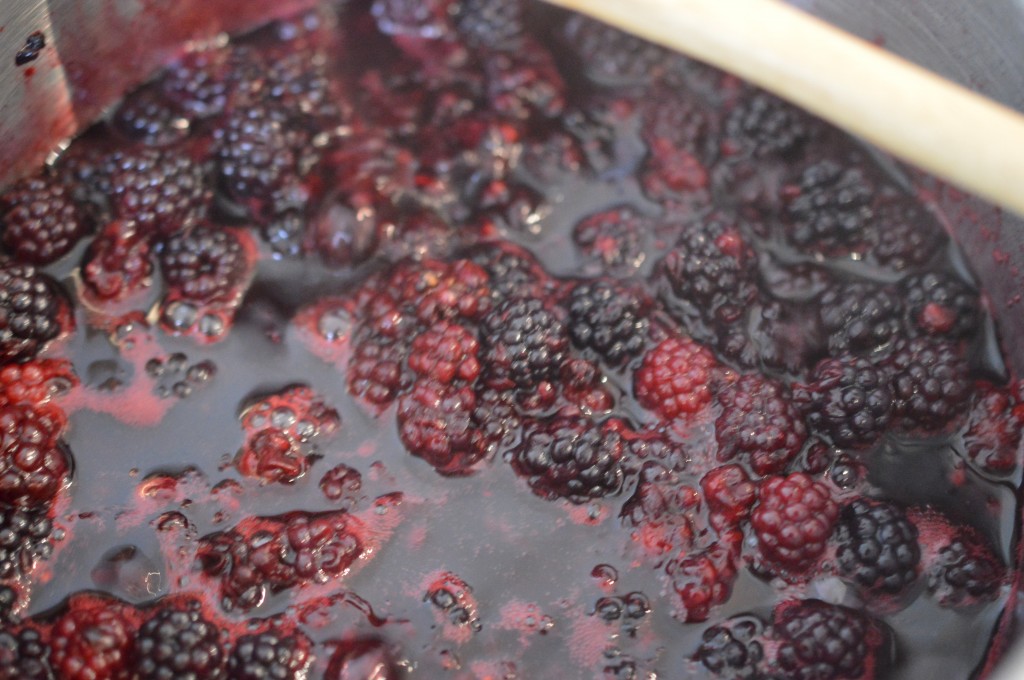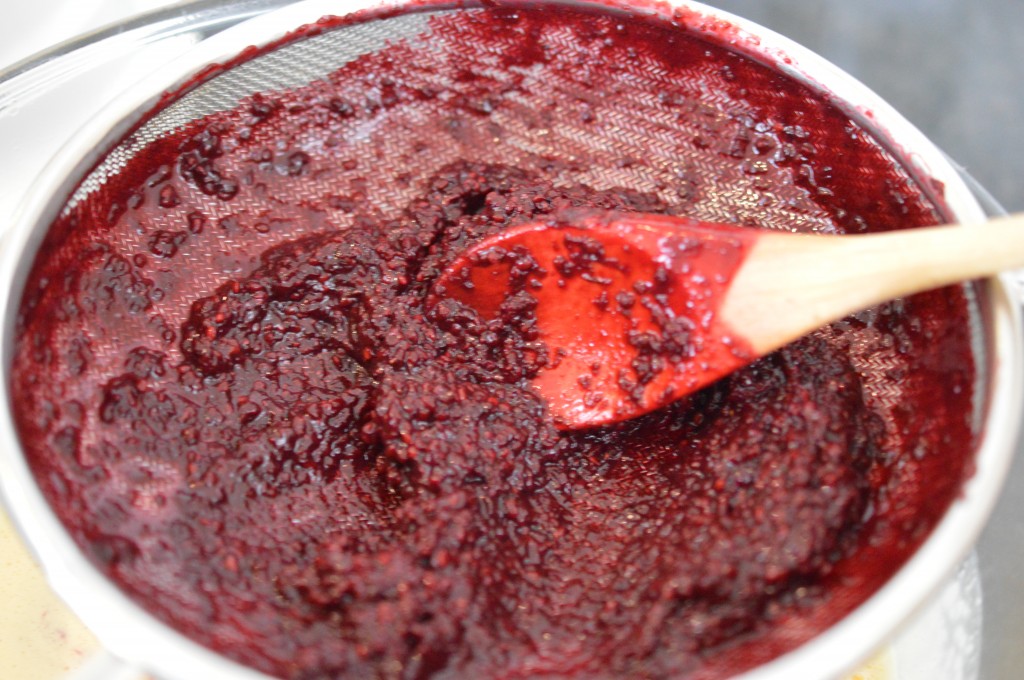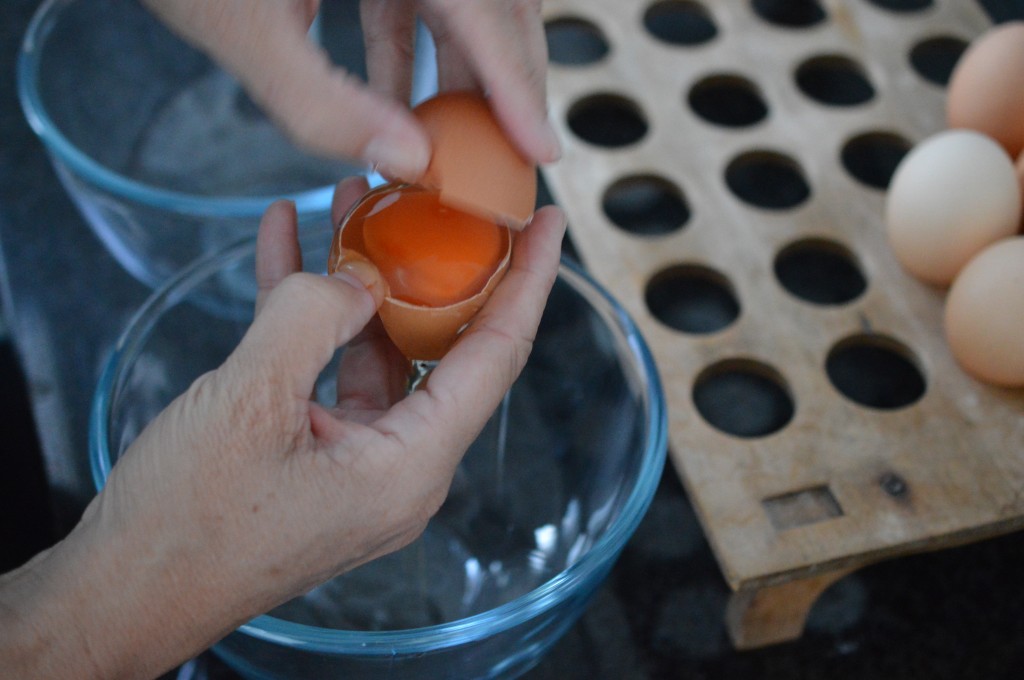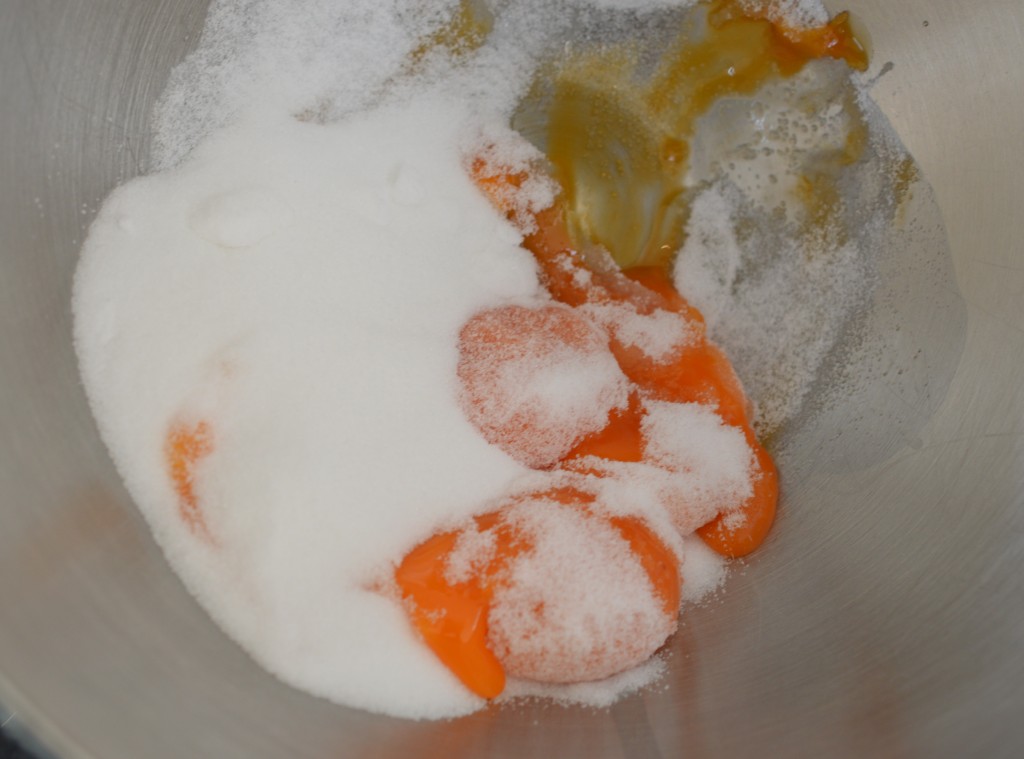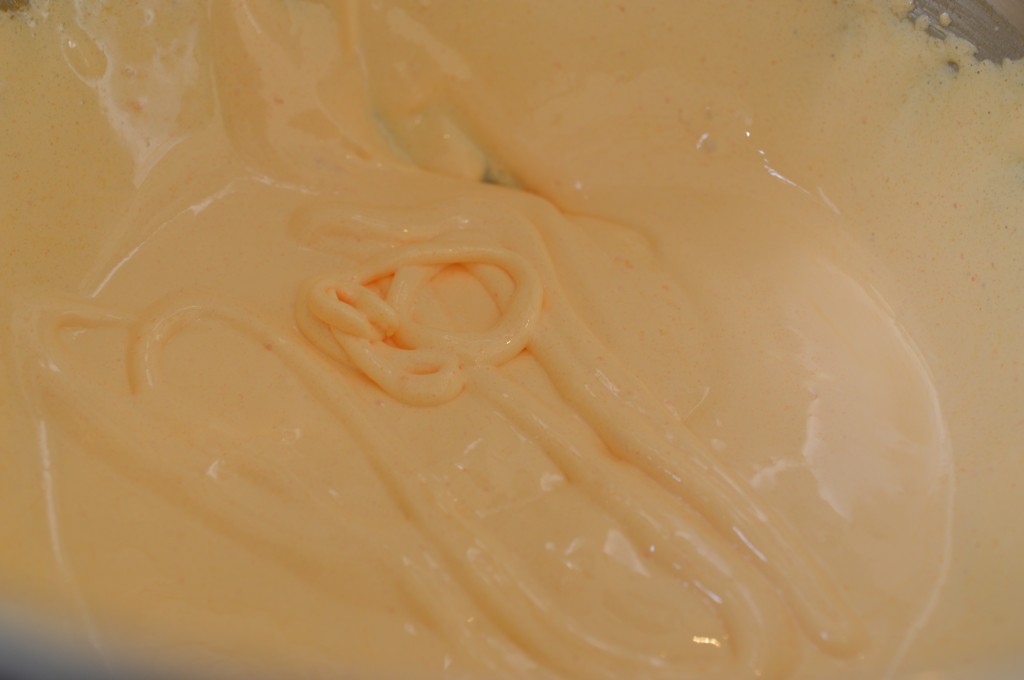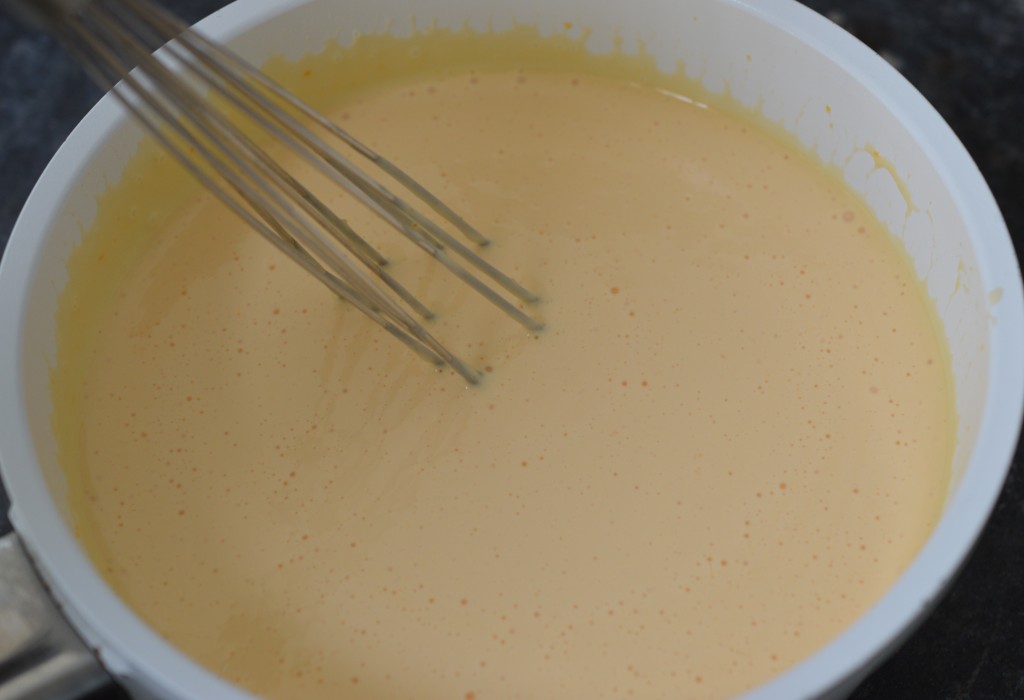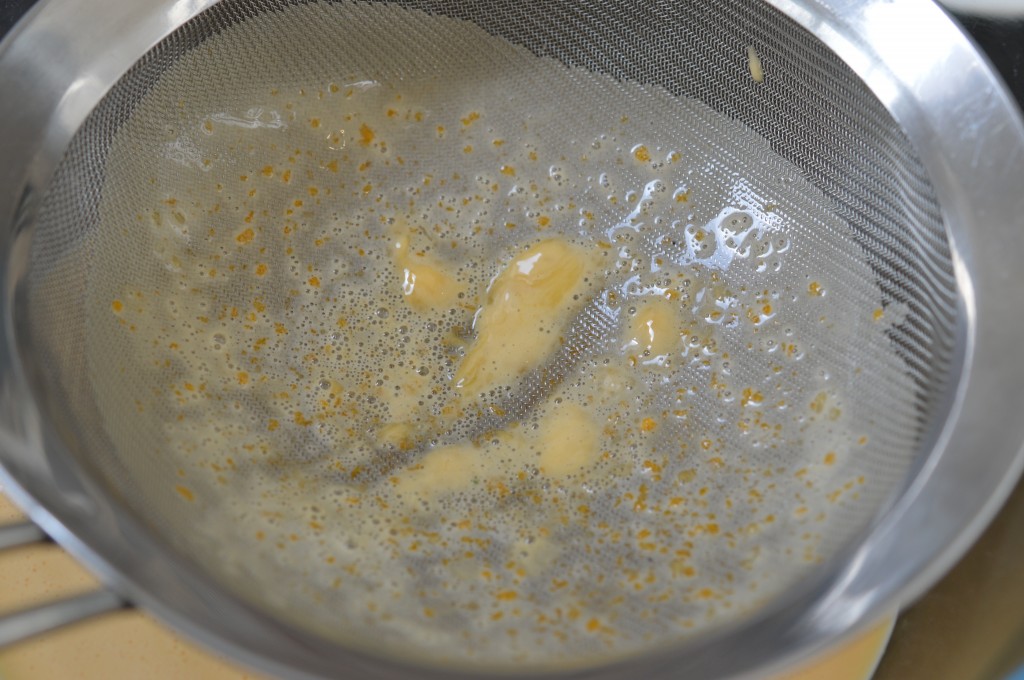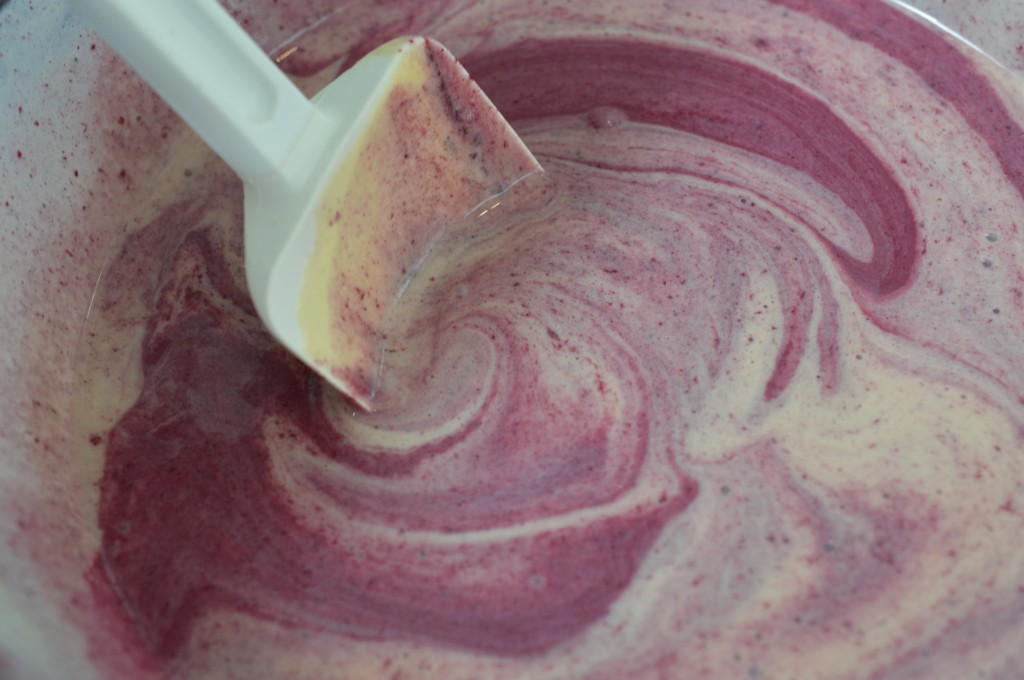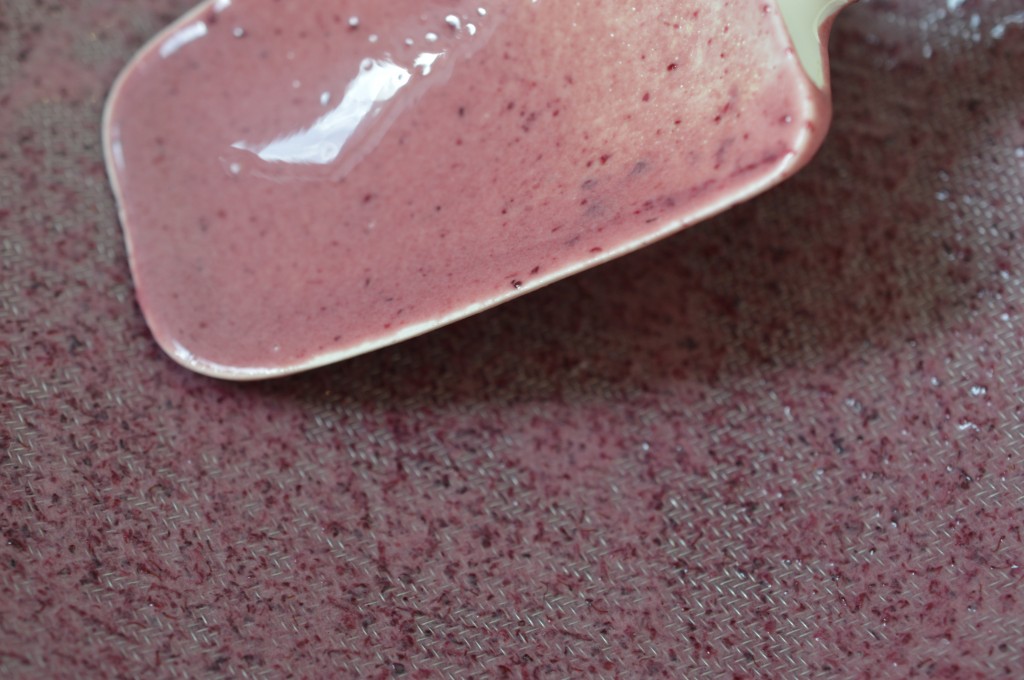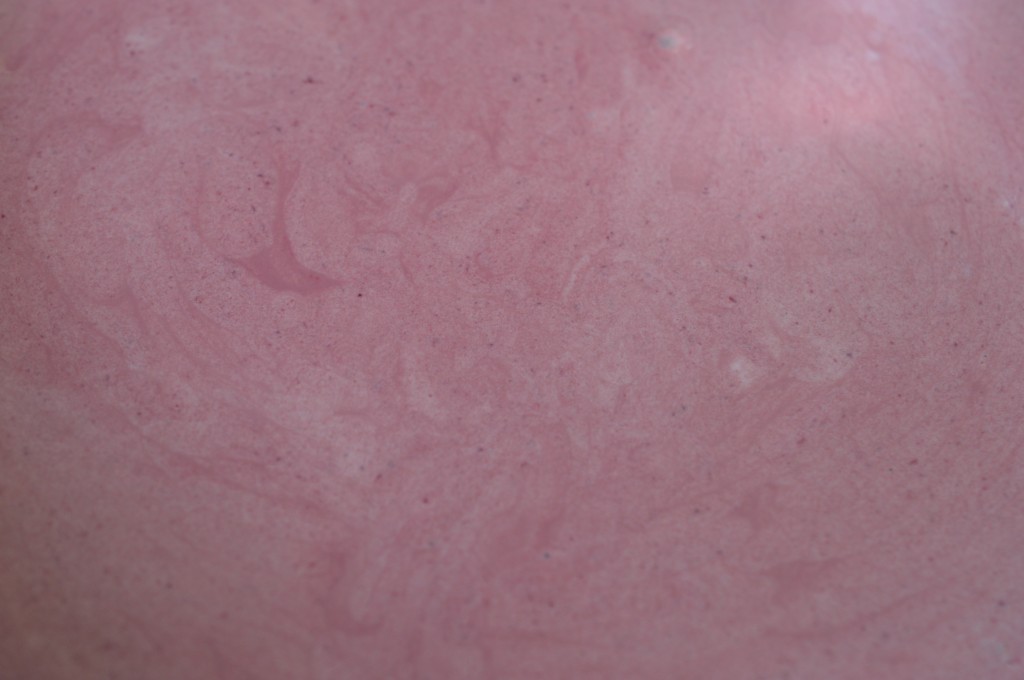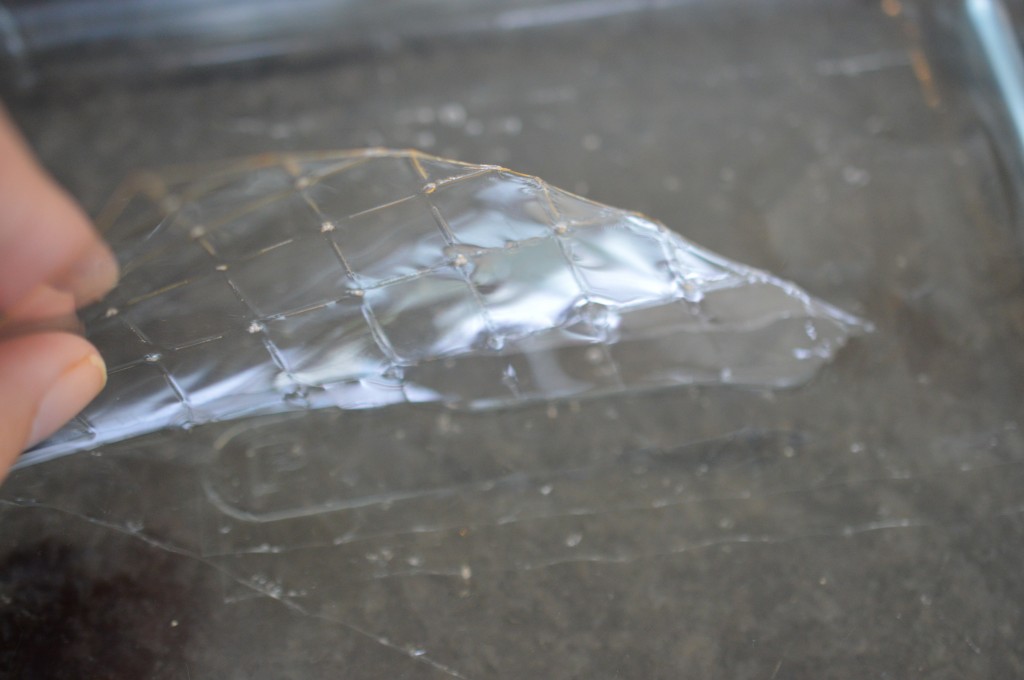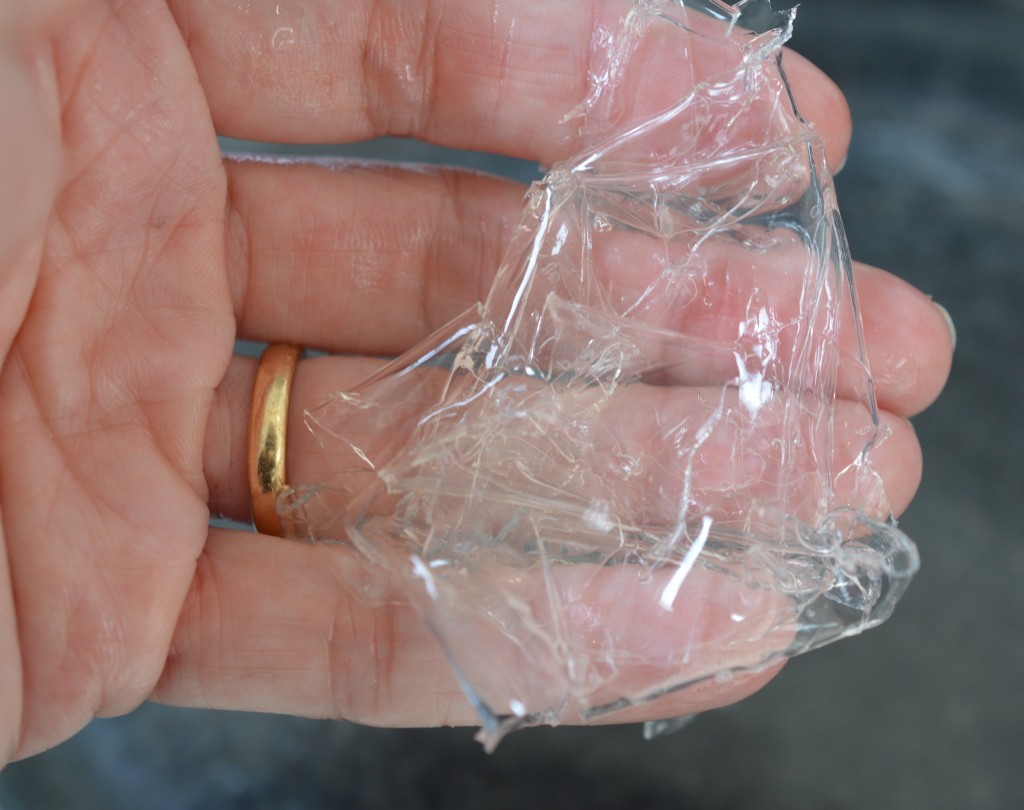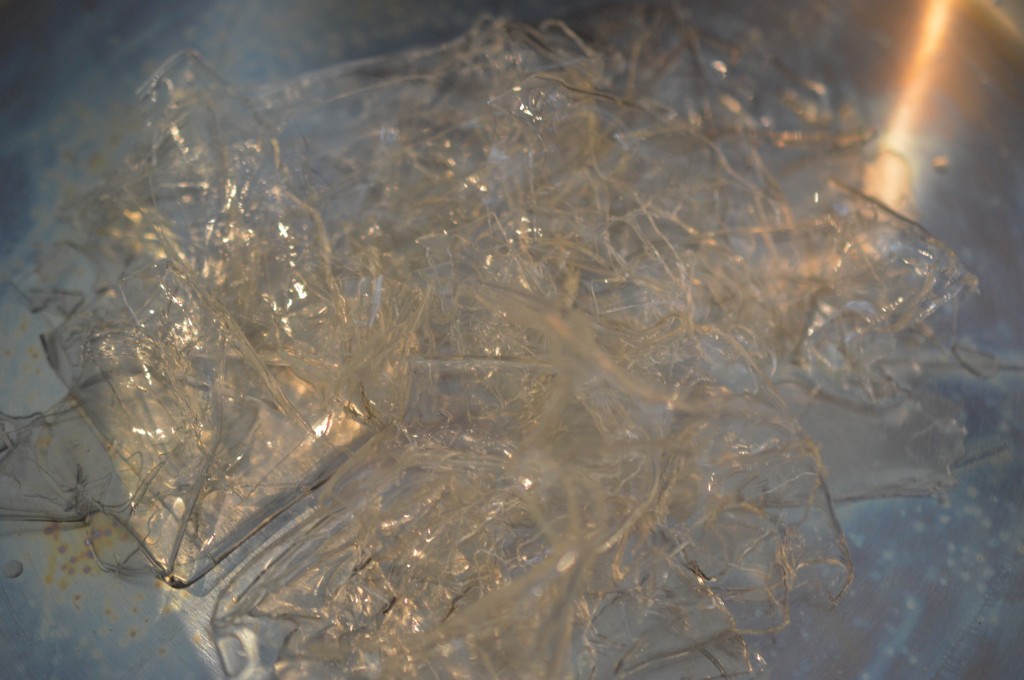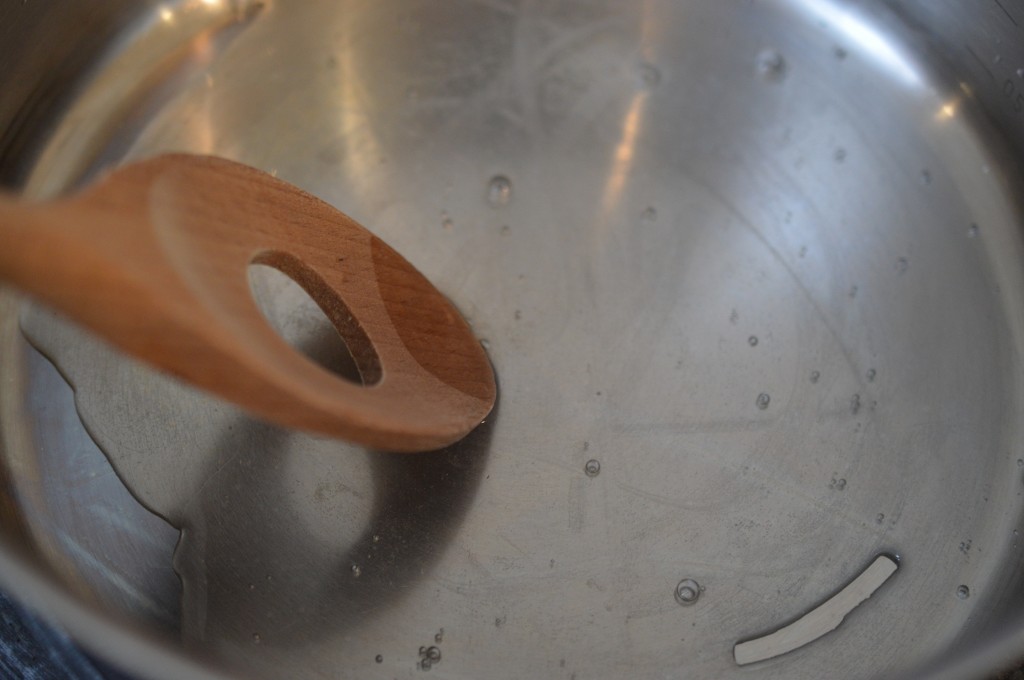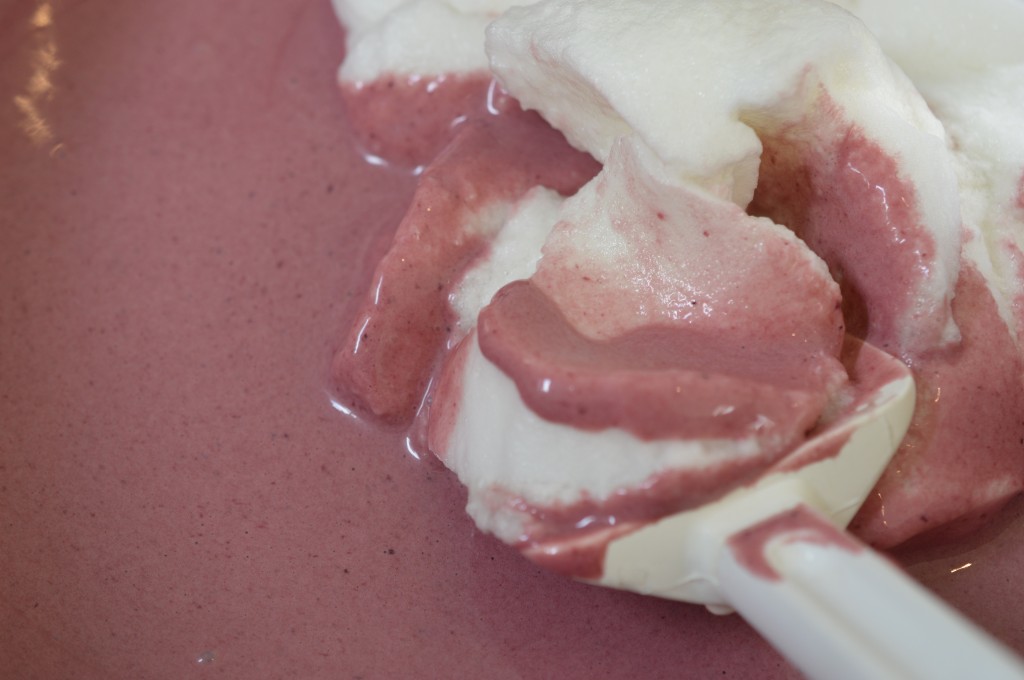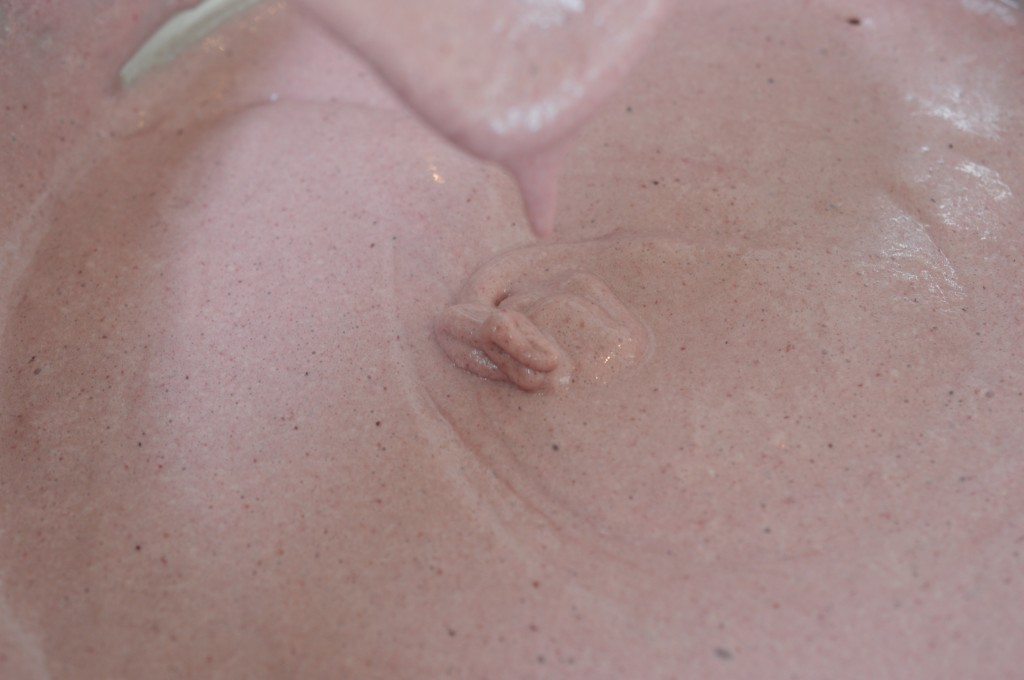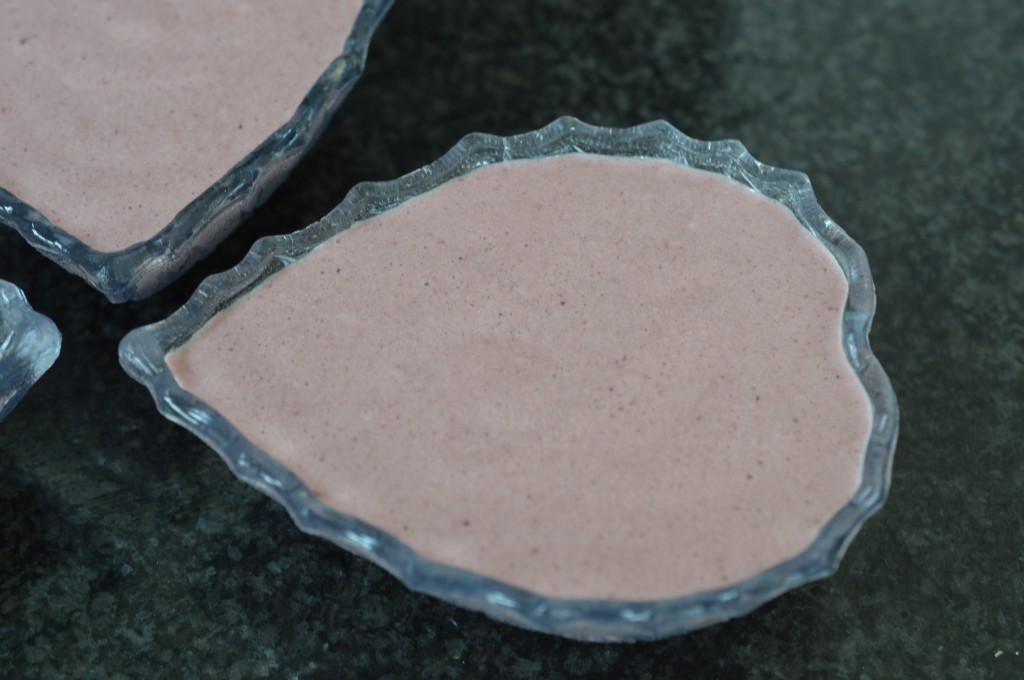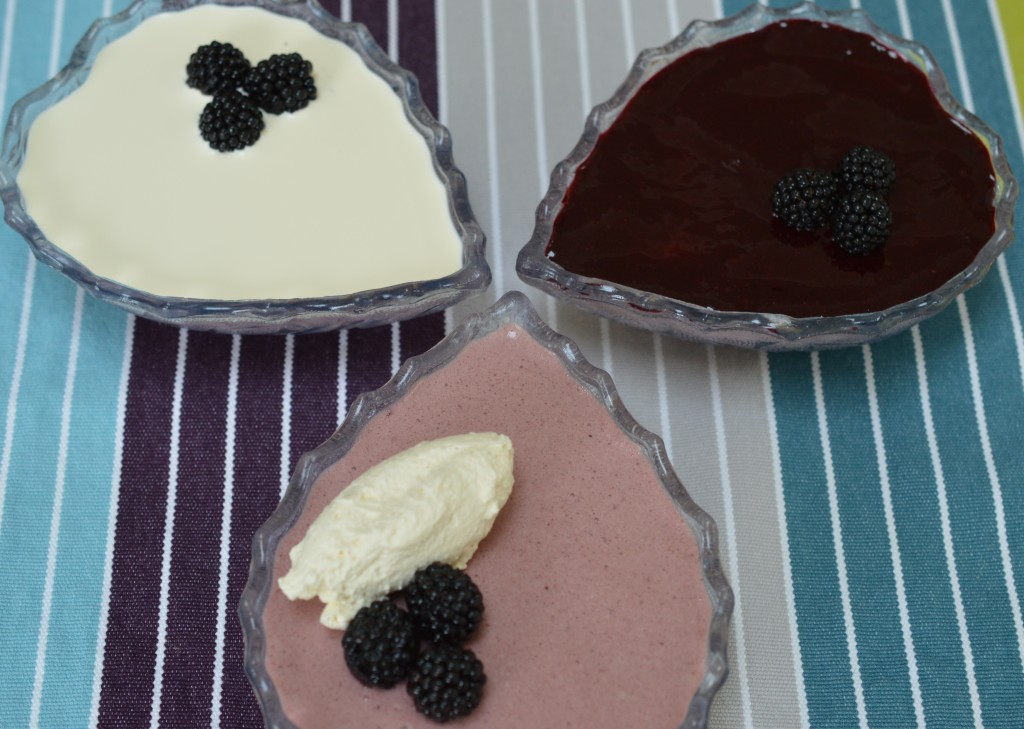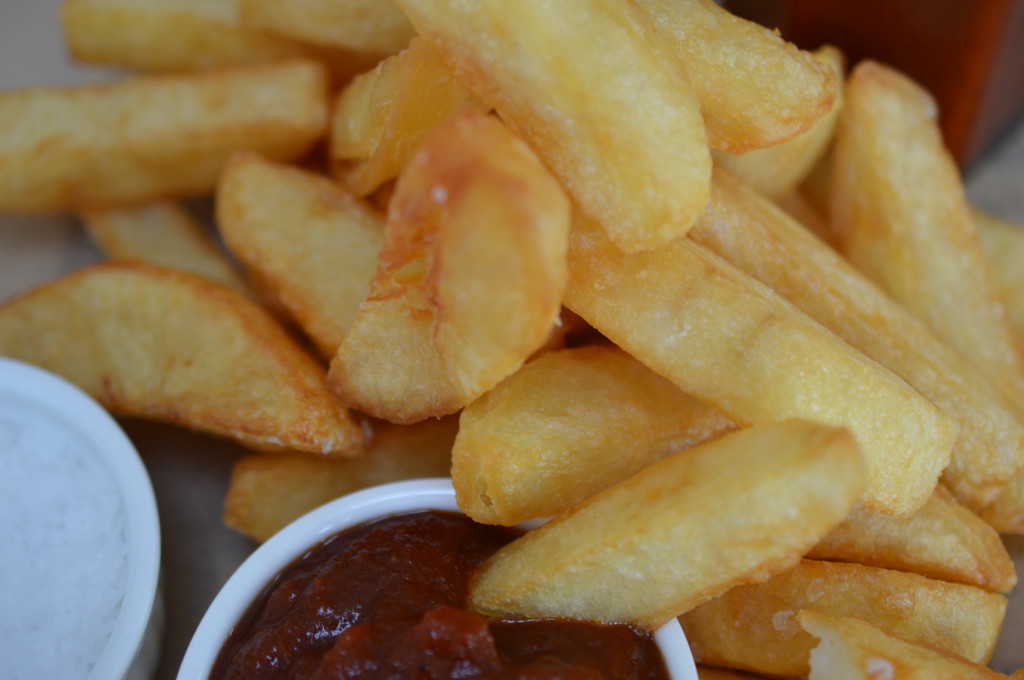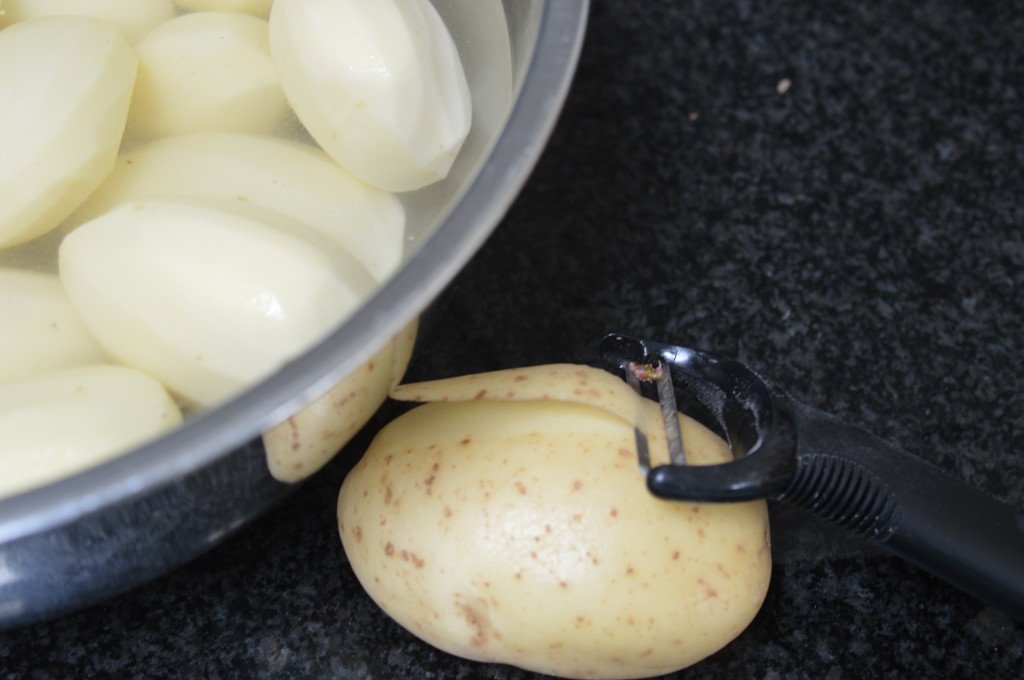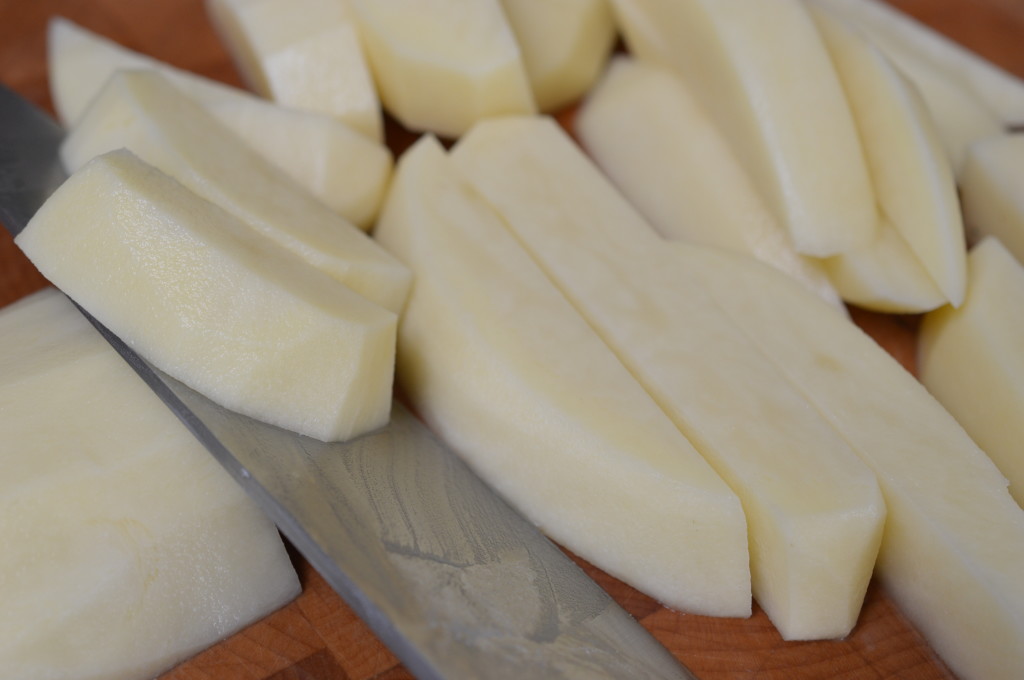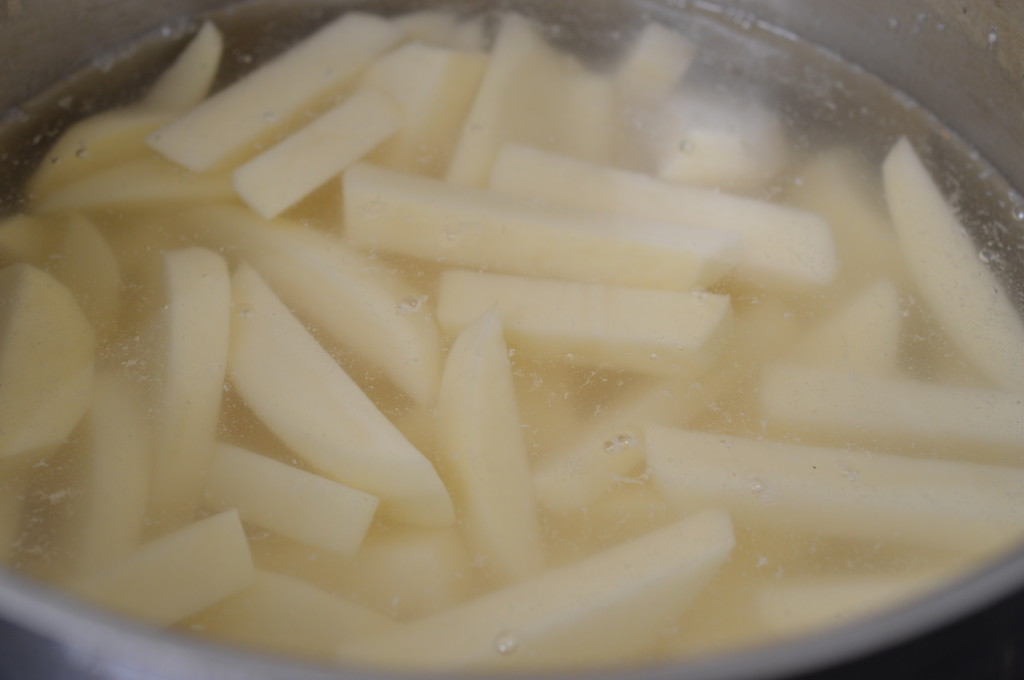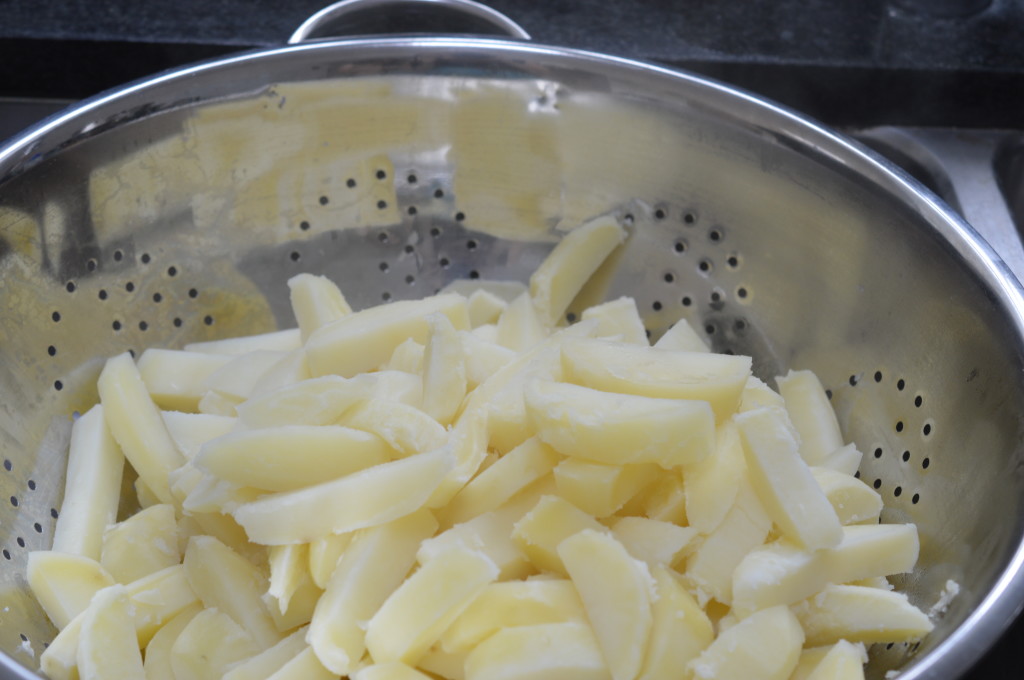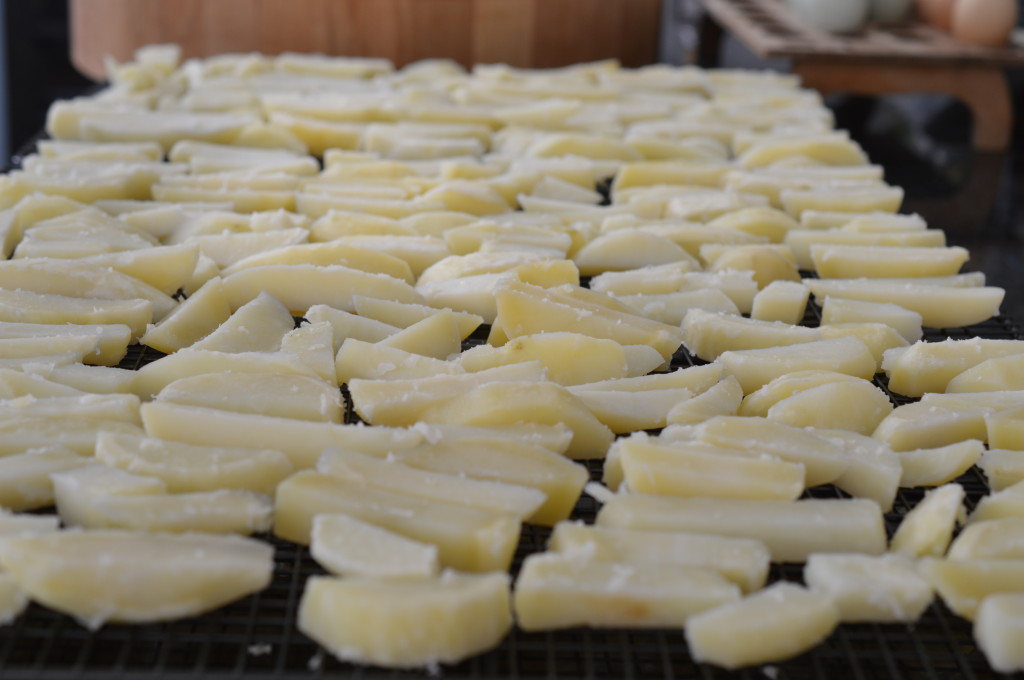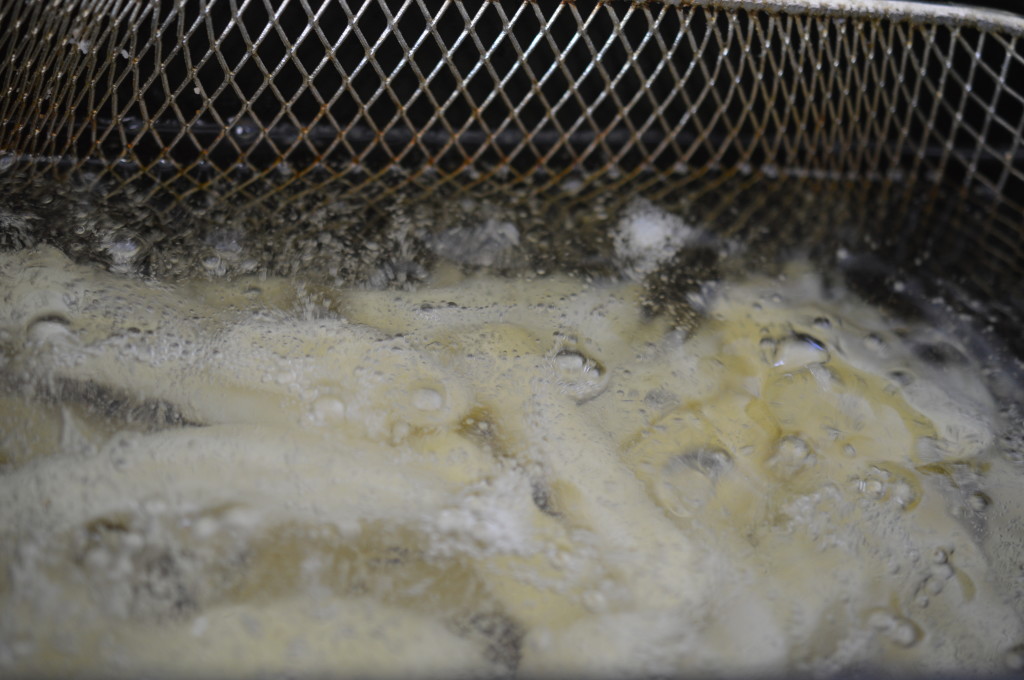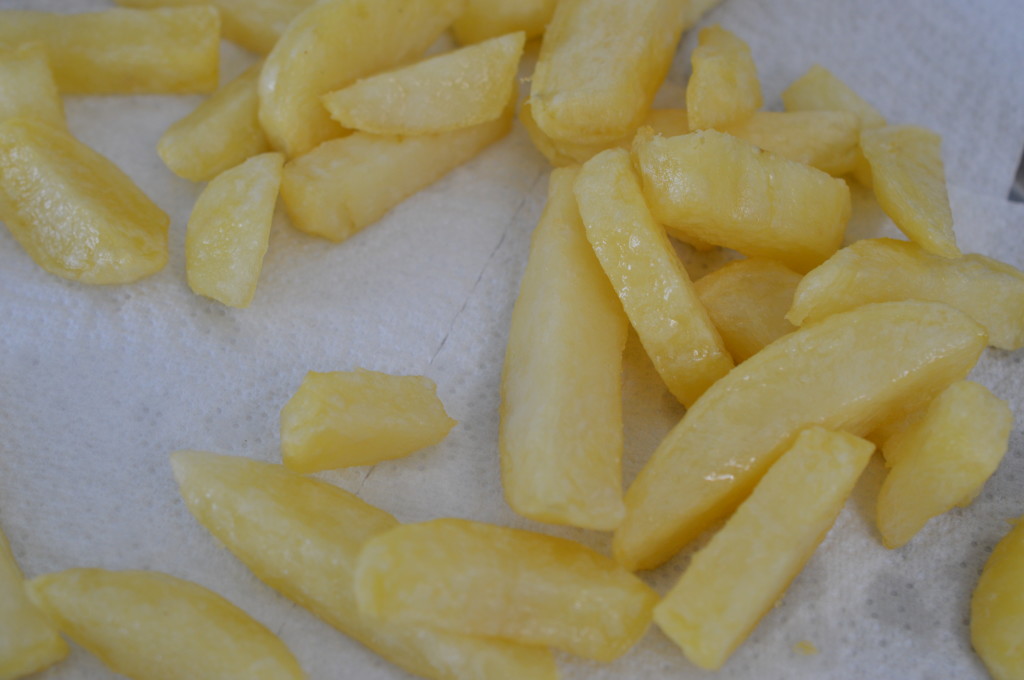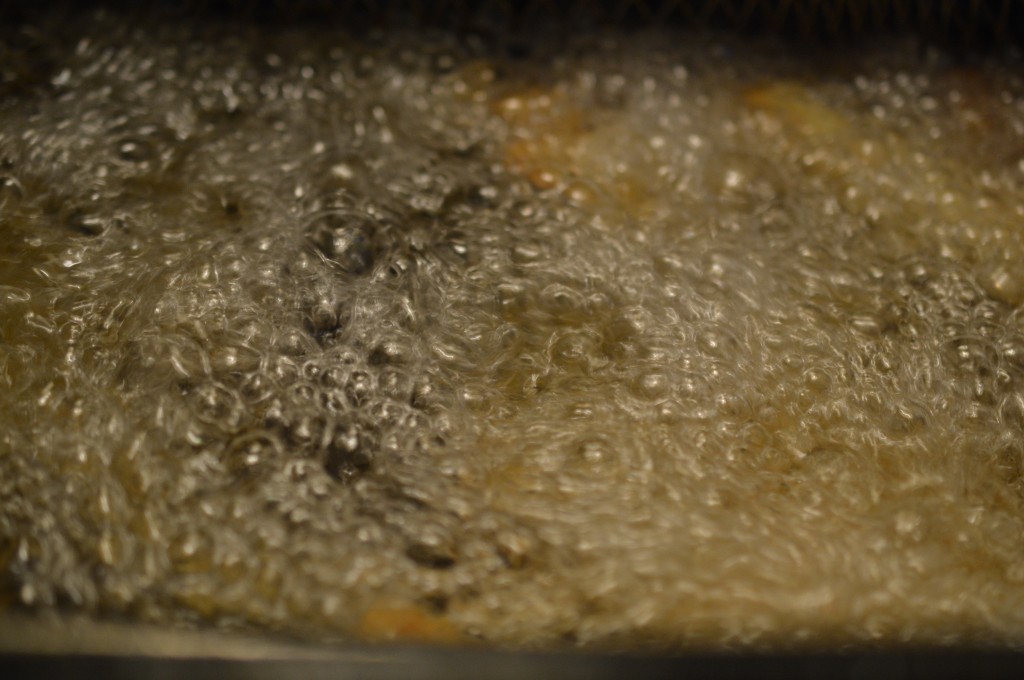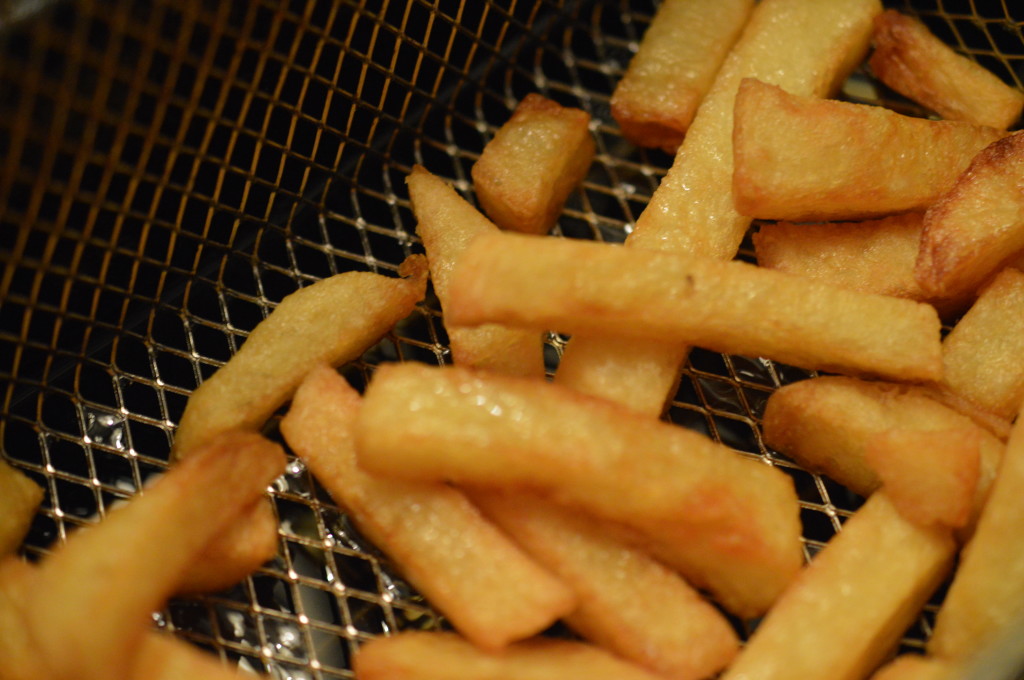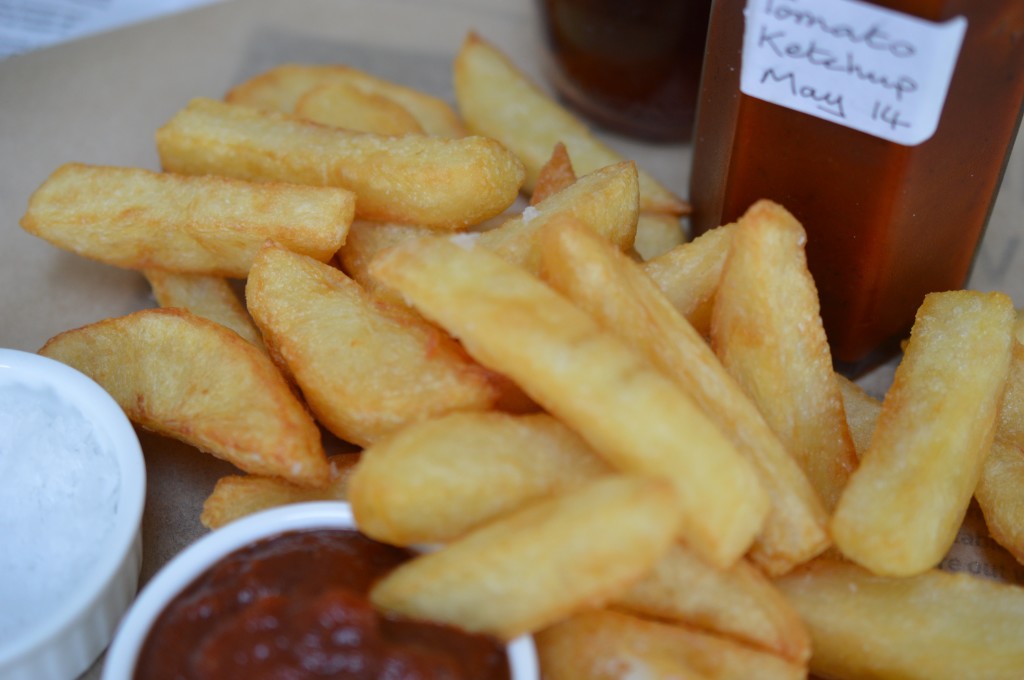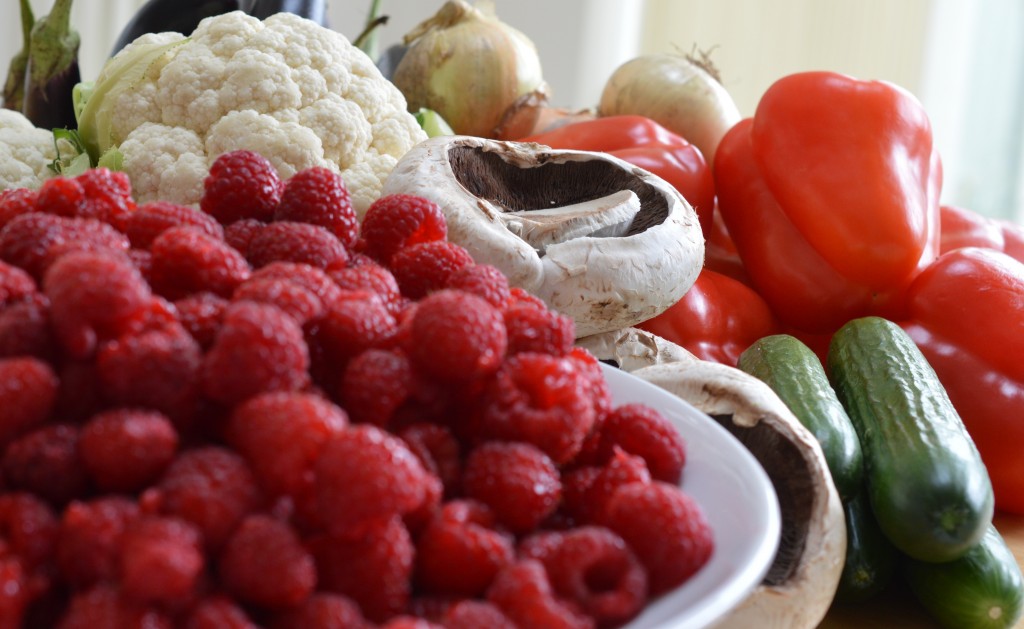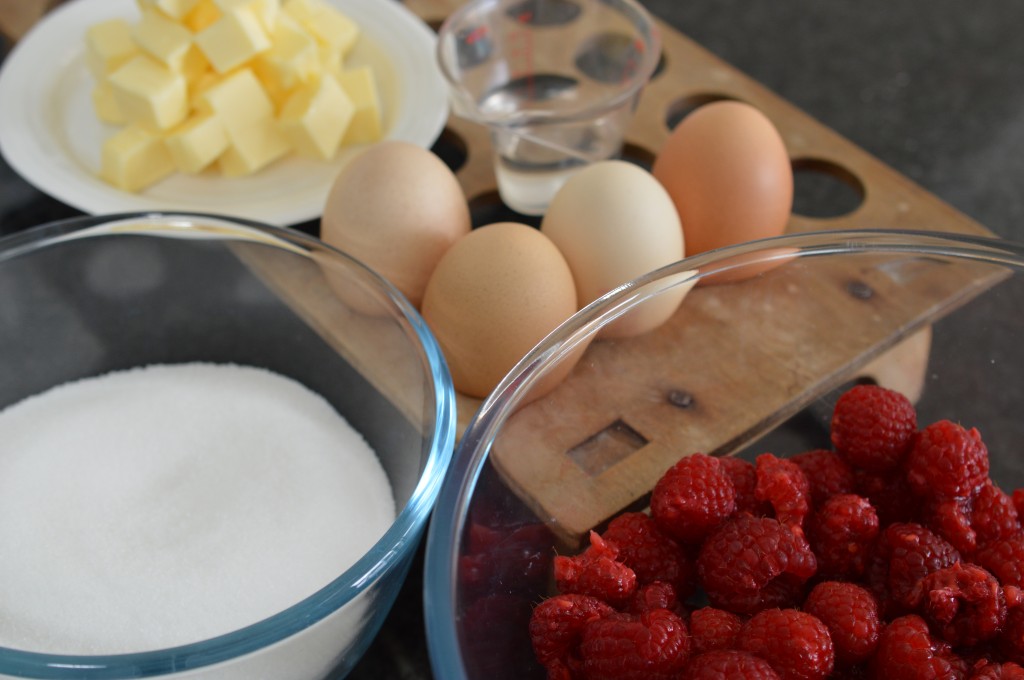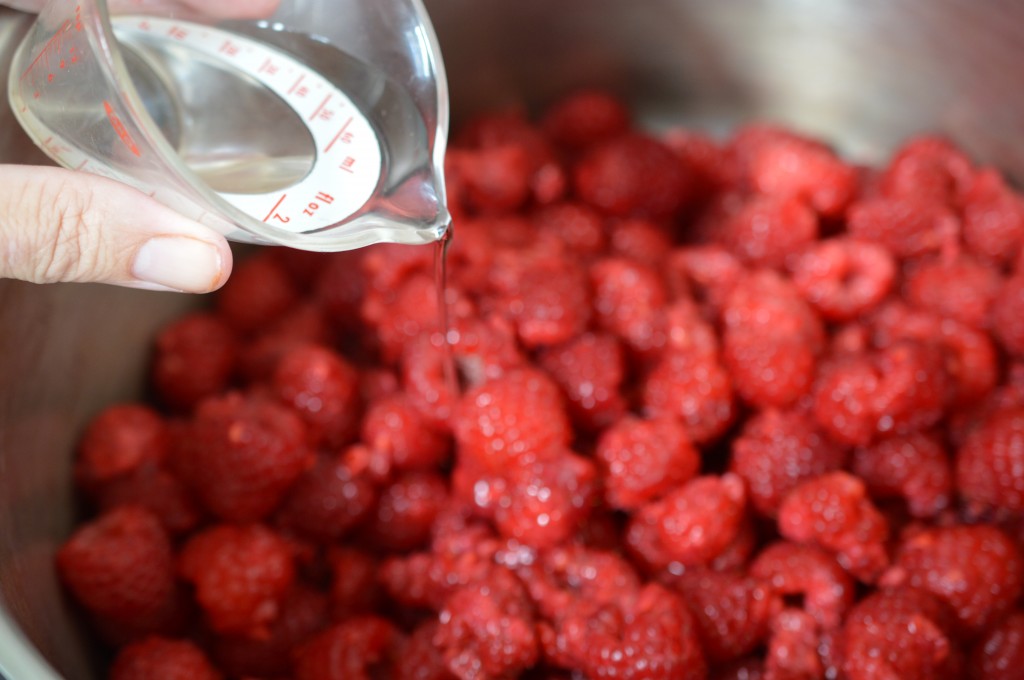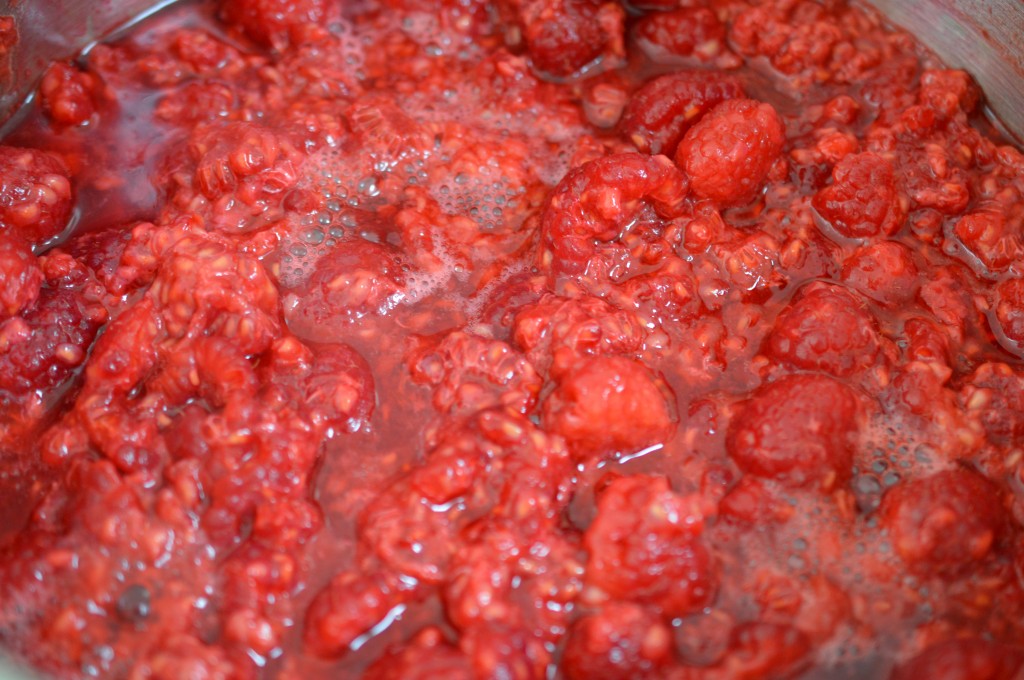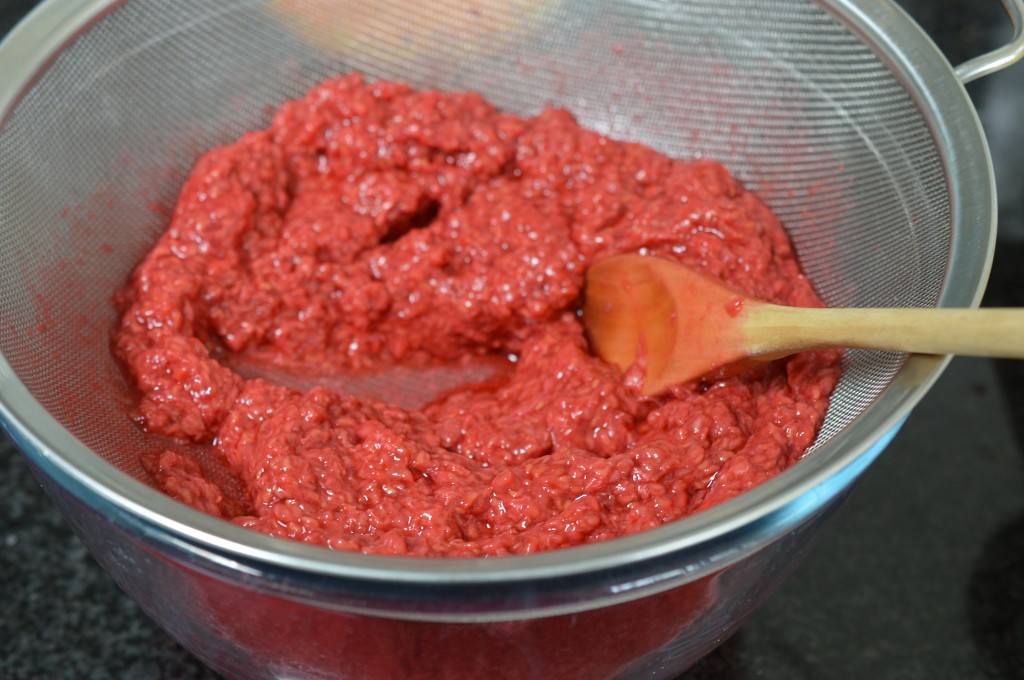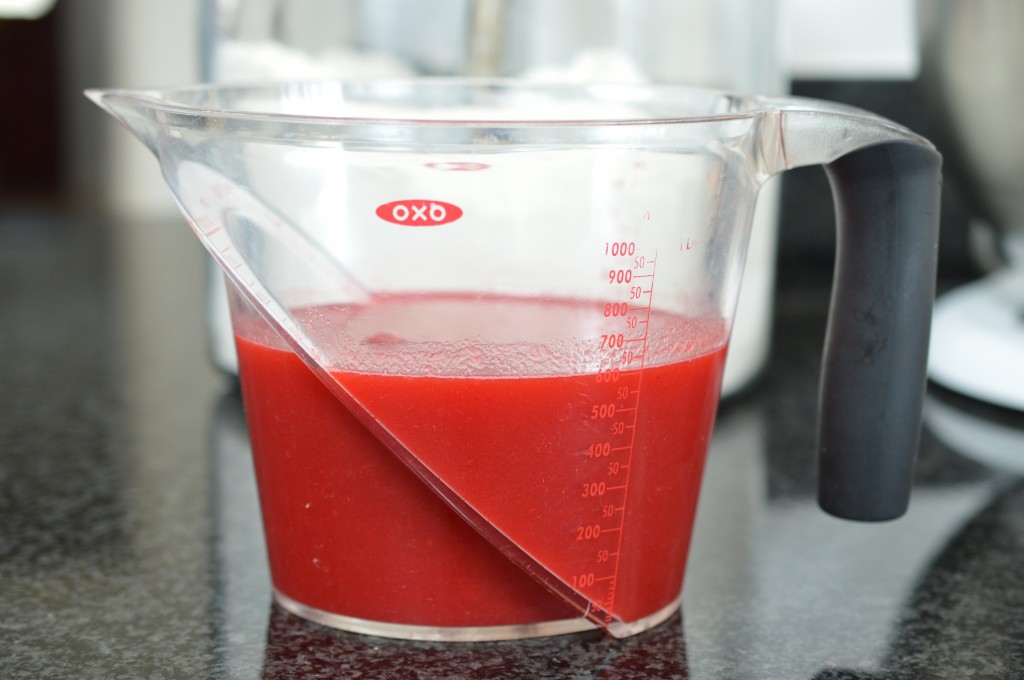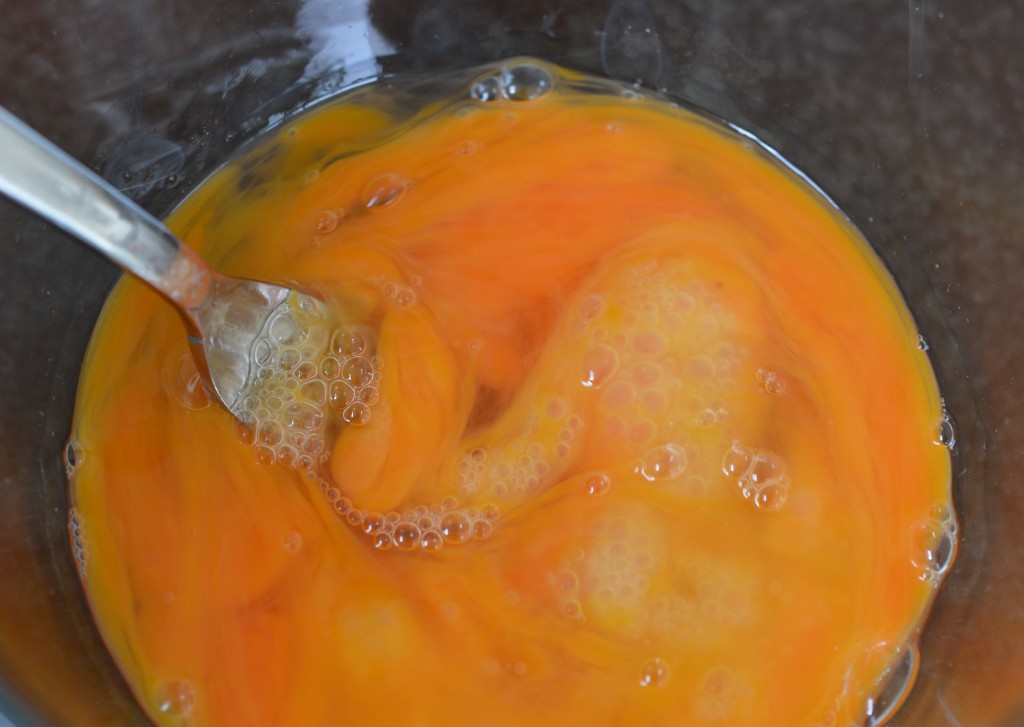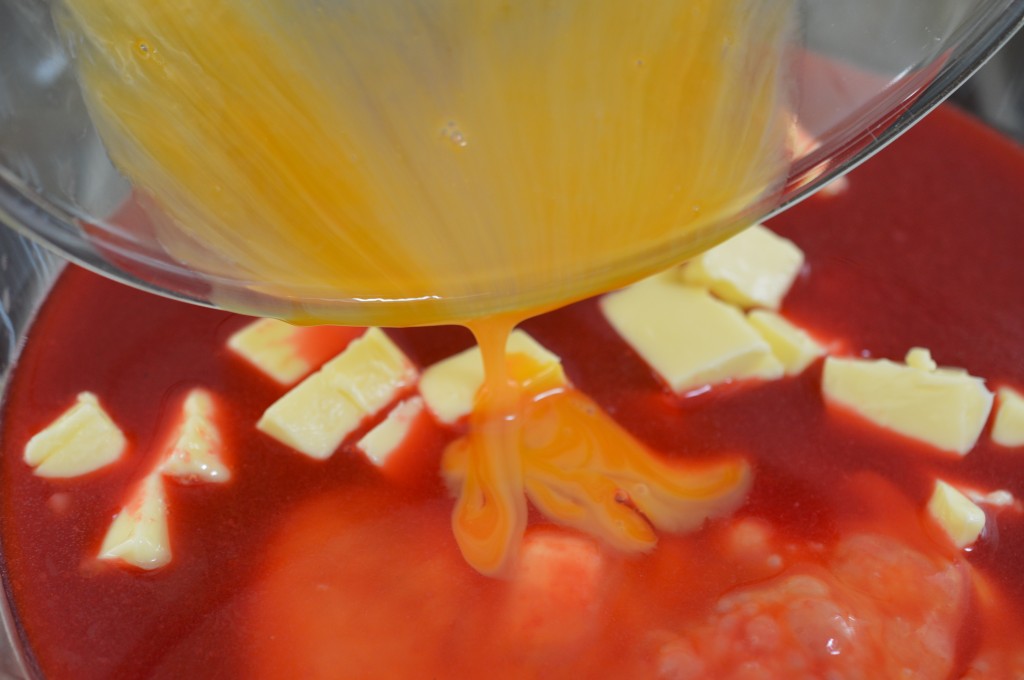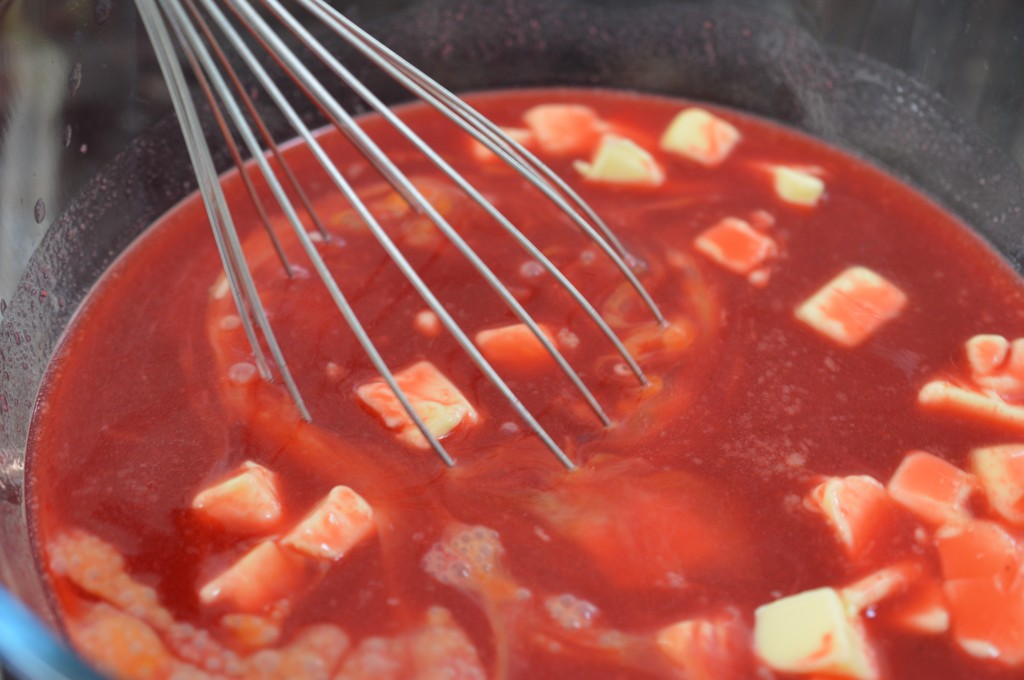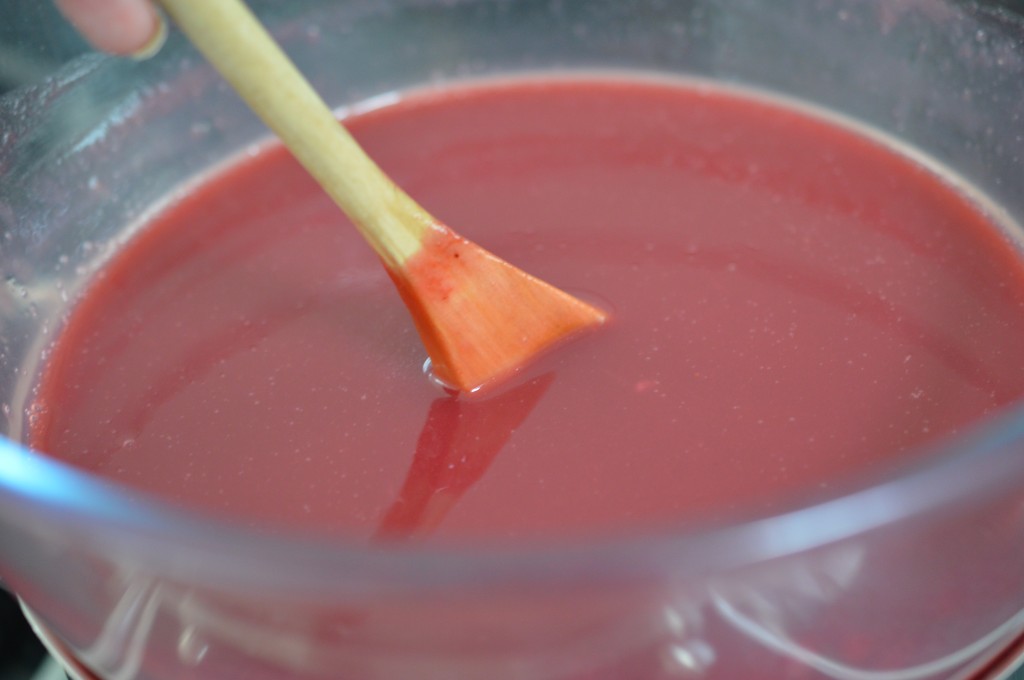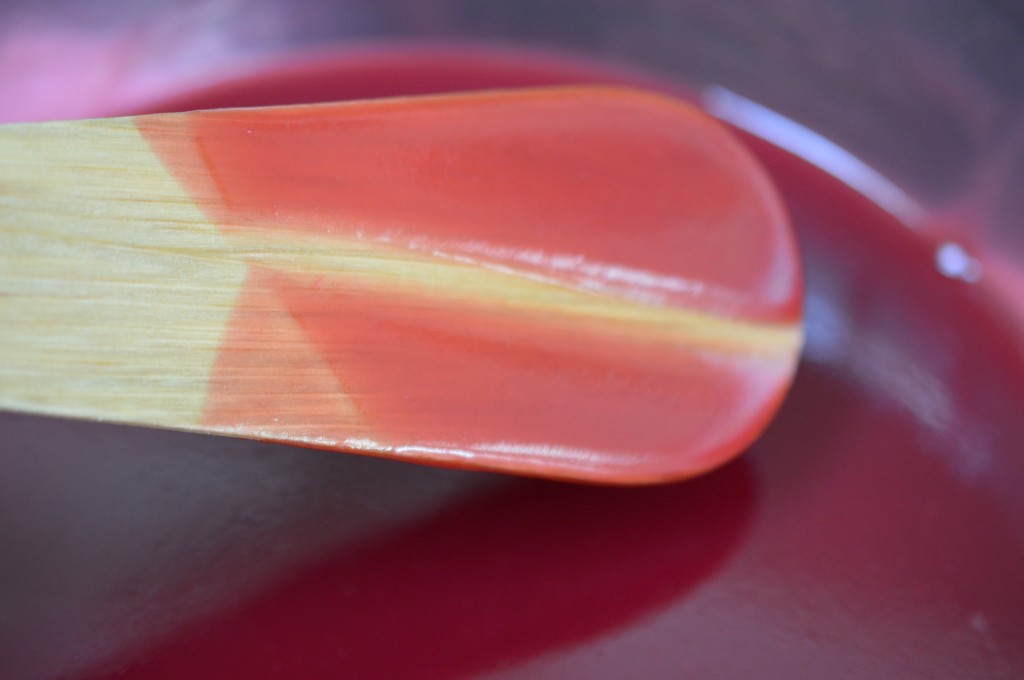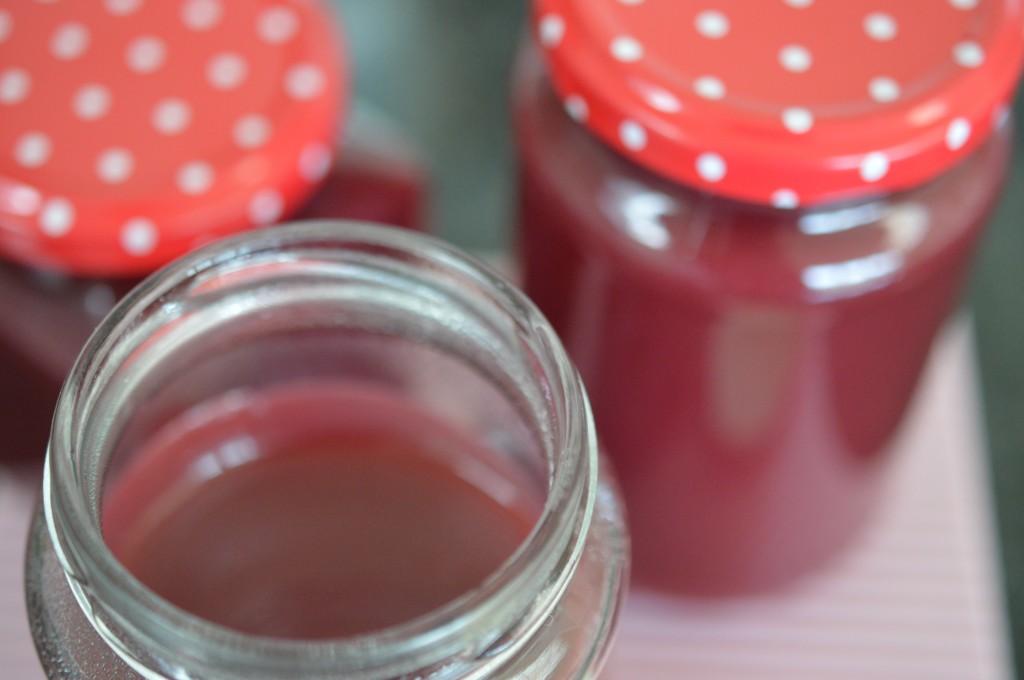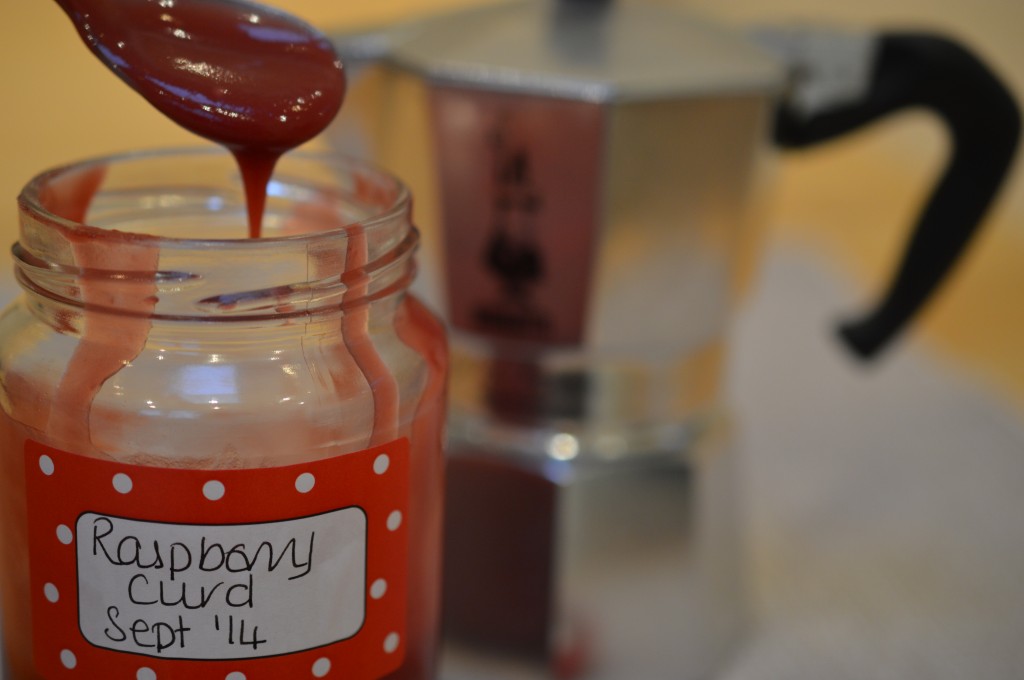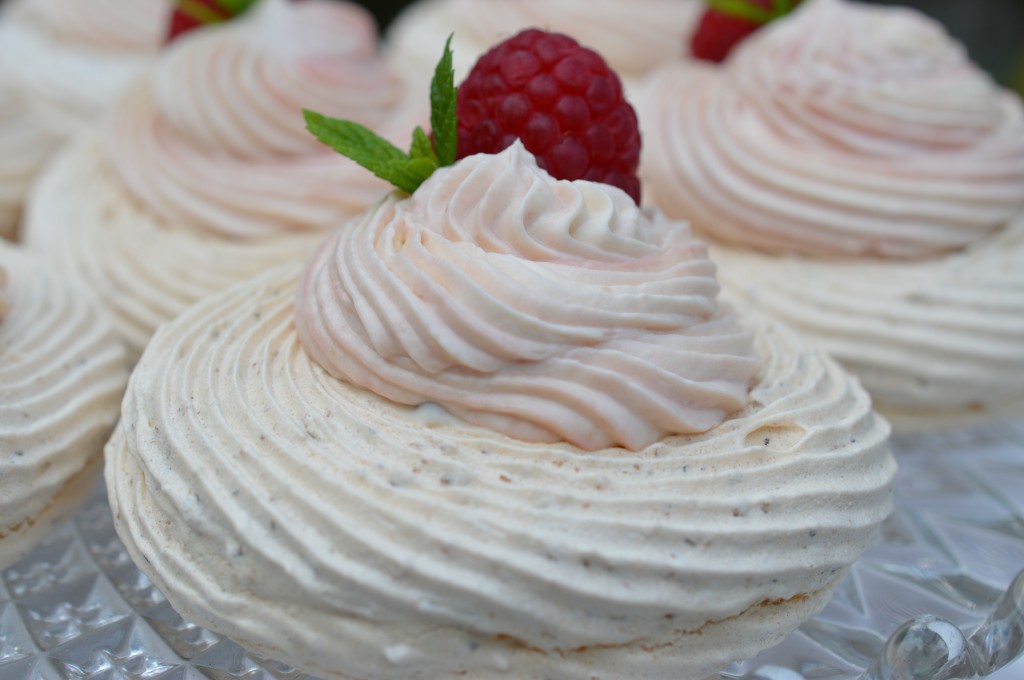Blackberry and Apple Steamed Pudding
As opposed to a ‘suet’ pudding. This is a three egg ‘sponge’ mix, steamed. It’s perfectly possible to bake it, but you do end up with more ‘cake’ than ‘pudding’.
Yes, I would prefer not to have to bother with pleated foil and I have never quite mastered the art of tying a neat knot round my pudding basin – but not cutting corners when it comes to making ‘sweet things’ is my foodie philosophy. You don’t need to eat this. It’s a treat – and I want my pudding light and fluffy. I wouldn’t want you to imagine I don’t greatly wish this counted as one of my five a day, but it doesn’t and I’m at that age when middle-age-spread is a fearful reality. So fluffy …! And so worth the calories.
It all begins with the last of my foraged blackberries, perfectly timed to be picked before the devil starts spitting on them. (I’m trying to be ‘cup’ friendly, but it’s not easy. 80g of blackberries is a straightforward two-third’s cup, but just wait until I get to the apple …!)
If I’m making ‘bramble jelly’ I don’t bother with this bit as all the nasties will be caught by the jelly bag, but when I’m going to use the whole berry I pop them straight into salted water. They are not a fruit which will wait around for you. A little soak in brine brings all the grubs to the top, if there are any. Just rinse a couple of times in clean water, then set on kitchen towel to drain thoroughly.
I use the same weight of apple (80g) as I do of the blackberries, but apples seem to take up more room. Plus it will be depend on how small you cut them. I like my apple to disintegrate to a sweet mush on the top of my pudding so I cut small and my apple was a ‘cheek’ of a large Bramley and was a heaped ¾ cup. Then stir in 2 tablespoons of light brown muscovado sugar.
Preparing a pudding basin is all about the butter. In order for your pudding to slide out you need to be thorough. Lots of melted butter all over your basin. I melt and brush it on. Fingers would be fine. If you’re worried a small circle of greaseproof paper in the base will keep you calm.
And into the pudding basin you put 3 generous tablespoons of Bramble and Apple Jelly (Blackberry Jam is also lovely.) The fruit goes on top of that.
To make the sponge mix, weigh the eggs in their shells and it’s the same weight in butter, caster sugar and self-raising flour – as per The Women’s Institute instructions. I’d enjoy rebelling, but it’s a good idea as eggs do vary in size. The butter needs to be at room temperature – not hard, not melted.
Cream the sugar and butter together. That’s either a nice big bowl and a wooden spoon or the paddle attachment on your mixer. You want pale and fluffy – and this takes longer than you think it will. Actually, you can’t really overdo this part.
Now add the eggs, one at a time, beating really well after each addition. Scrape down the sides of the bowl and make absolutely sure it’s all mixed in. Don’t worry too much if it looks a little ‘curdled’. If you spot it happening, sprinkle a tablespoon of the measured flour over the top and your mixture will start to behave once more. It’s caused by one/or all of several things – adding the egg too fast, eggs not being at room temperature or not having creamed the butter and sugar sufficiently. A curdled mixture isn’t the end of the world, but your pudding will be slightly ‘heavier’.
‘Gently fold’ in the sieved flour and cinnamon until there are no floury seams running through your cake mix. Try and keep as much air in as possible. Most recipes will tell you to use a large metal spoon, but I love my flexible white spatula. You want to end up with a ‘dropping consistency’. When you lift the mixture up and tap your spoon/spatula on the side of the bowl it should drop off.
Then pop that on top of the blackberry and apple mix. You will probably need to waste some.
Steamed puddings are very traditional and most recipes were written for a 2 pint pudding basin. If you have one, this will work perfectly. (If anyone knows where you can get a 1.2 litre basin, do let me know!) I have to use a 1 litre one, as the UK is ‘almost’ metric and that’s all I can buy. If you’re doing the same, you do need to leave a ‘rising’ margin at the top of the basin. There’s enough mixture to fill to the brim – don’t do it.
This is the only tricky bit, made easier by the new-ish parchment lined foil. Either take a square of that – or a square of baking parchment and another of foil placed on top of each other. Make a pleat across the centre to give space for the pudding to rise. Butter the baking parchment and place it butter-side down on the pudding.
Now it’s the knotting ‘thing’. It helps if there’s someone around with a spare finger. This needs to be secure. Trim off the excess – you don’t want any of the paper to be sitting in the water when you steam the pudding as this will encourage water up and into your pudding. A ‘soggy pudding’ is as much a sin as a ‘soggy bottom’ .. (You might need to have watched The Great British Bake-Off for that.) Water – and, in fact, steam, getting into your pudding will spoil it.
If you have a steamer large enough to hold your pudding, use that. Otherwise, it’s a saucepan and an upturned saucer placed in the bottom will stop your pudding sitting on the base of the pan. Scrunched up foil does the same job.
Place the pudding into the saucepan – and fill up with water (I use boiling water from a kettle) until it reaches a little over half-way up the side of the basin. Put it on the heat and once the water is boiling, reduce the heat and gently simmer the pudding – lid on – for 1½ hours. Keep an eye on the water levels. You may need to top up.
Aga cooks – you won’t have to top up the water, but you will need to steam longer. What I do is, bring the water to a boil again on the Boiling Plate, transfer to the Simmering Plate for 5 minutes and then move it into the Simmering Oven, lid on, for 3 hours. It’s perfect, every time.
At the end of the ‘steaming’ you need to unwrap and check all is well. If your pudding doesn’t feel ‘springy’, re-tie (you may swear if you feel it will help and there are no small children in the vicinity) and continue steaming for another fifteen minutes before checking again.
This pudding doesn’t need to cool. In fact, it shouldn’t. Run a knife around the edge and just check there are no sticking points. Place the plate you want to serve the pudding on, preferably with a slight lip, on top of the basin. Deep breath. With one oven-gloved hand on the hot bowl and the other on the plate, confidently turn it over.
The basin is hot. A fork will give you a little leverage. Lift the basin off.
One Blackberry and Apple Steamed Pudding. I don’t know what it is about a ‘steamed pudding’ but they do seem to have more ‘pulling’ power than the most impressive cleavage. Men melt.
Particularly if you serve it with some proper custard …? Eat.
Blackberry and Apple Steamed Pudding – Makes a 2 pint pudding
- 3 tablespoons of bramble and apple jelly (or blackberry jam)
- 80g/²⁄³ cup of blackberries
- 80g/heaped ¾ cup cooking apple, peeled and diced small
- 2 tablespoons of light muscovado sugar
- 3 eggs, weighed in their shells
- unsalted butter, the same weight as the eggs
- caster/superfine sugar, the same weight as the eggs
- 1 tsp ground cinnamon
- 1-2 tablespoons of milk, as necessary
Prepare the fruit. Place the diced apple and blackberries in a small bowl and combine with the light muscovado sugar.
Butter a 2 pint/1.2 litre pudding basin, and place 3 tablespoons of bramble and apple jelly in the base.
Sift the flour and cinnamon together.
Place the room temperature butter and sugar in the bowl of your mixer. With the flat beater, cream the two together until it is light and fluffy. Gradually add the beaten eggs, beating well after each addition.
Taking care not to loose all the air you’ve worked so hard to incorporate, ‘fold’ in the flour/cinnamon mix. If the mixture is a little stiff, add a little milk. You are wanting a ‘dropping consistency’.
Lay a sheet of foil on top of a sheet of baking parchment and make a pleat in both, to allow for expansion. Butter the baking parchment. Place it butter-side down on the pudding. Top with the foil. Align both pleats on top of each other. Tie a piece of string firmly around the ‘lip’ of the basin. Trim the edges so it won’t rest in the water.
Place an upturned saucer in the base of a saucepan and lower the pudding on top. Fill the saucepan with boiling water so that it reaches halfway up the bowl. Bring the water back to a boil, then reduce the heat to a simmer. Cover. Keeping an eye on the water level – it may need topping up – steam for 1½ hours.
Carefully lift the pudding from the water and remove the coverings. If it’s cooked the centre will feel springy and a light finger will pull the edges from the side of the bowl. If it needs a little longer, re-tie the coverings and continue steaming for another fifteen minutes. Check again.
When it’s cooked, place your serving plate on the top of the pudding and smoothly turn it over. Lift the pudding basin off, being aware that warm jam will ooze down onto the plate. Don’t allow the pudding to cool in the basin as it will stick.
Serve warm with a traditional English custard or cold cream.
Aga cooks – Bring the water surrounding your pudding to the boil on the Boiling Plate, transfer to the Simmering Plate for 5 minutes and then move it into the Simmering Oven, lid on, for 3 hours.
